3d Tribal Shoulder Tattoo Designs
Tribal Tattoos
Tribal tattoos are among the most popular tattoo styles, especially for those who favor both meaning and masculinity in their tattoo designs.
Popular for their ability to make their wearer look like a tribal warrior, tribal tattoos have a rich history and are a great expression of artistic design and skill.
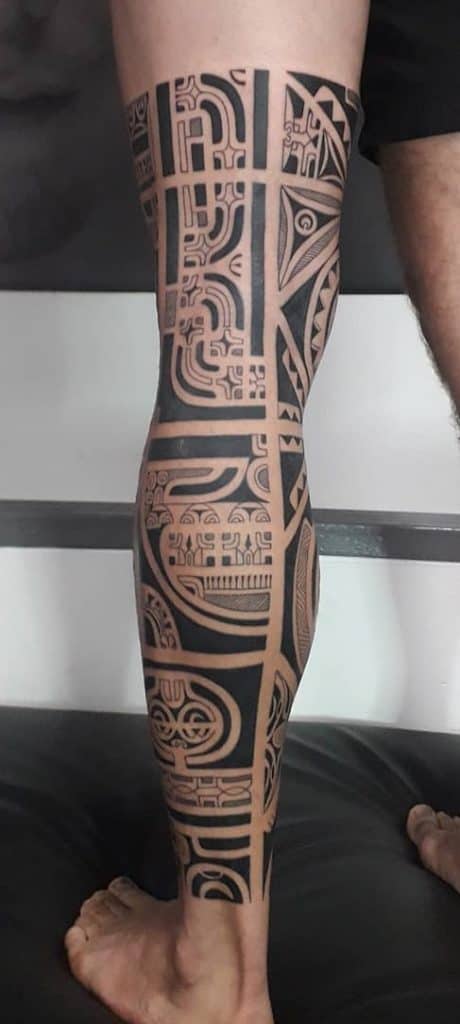
The tribal tattoos that we know today are based primarily on the warriors of the Bronze Age.
In this time, warriors would proudly boast tribal tattoos as a way not only of indicating the tribe that they were from but also for warding off other tribes.
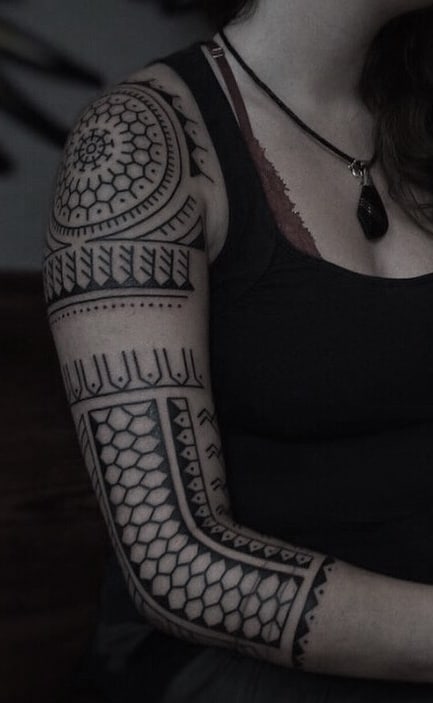
Today, we will be answering all of your questions surrounding tribal tattoos.
From the history and meaning of tribal tattoos to the best placement for one of your own, this is the ultimate guide to tribal tattoos.
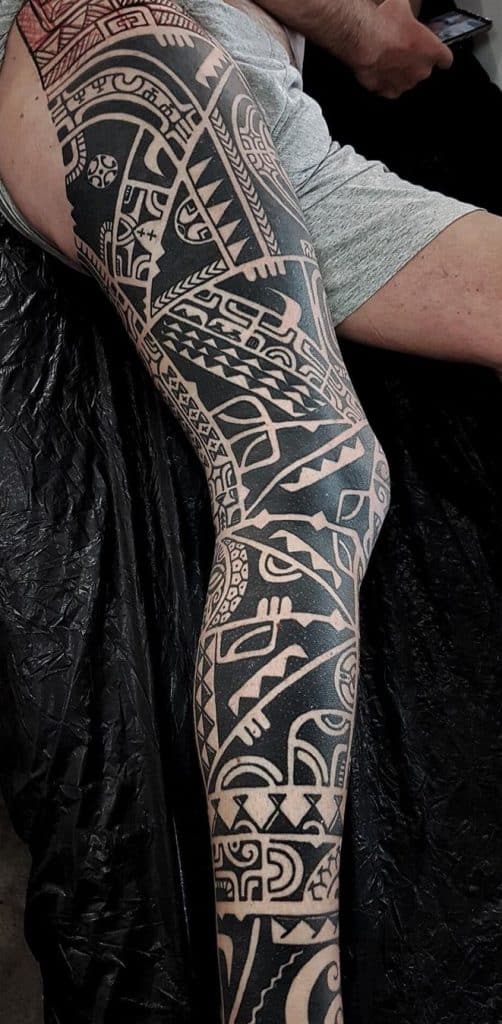
As one of the most popular tattoo styles of today, you can't go wrong with a tribal tattoo design!
Tribal tattoos are a long-lasting favorite in the tattoo world.
People are drawn to tribal designs for their bold, curving lines and cultural history.
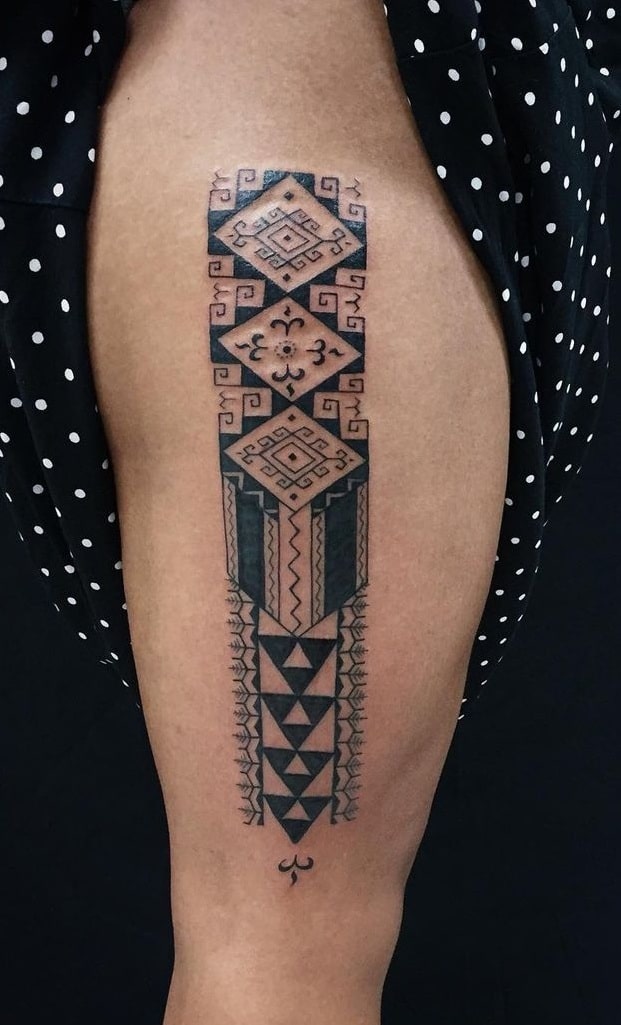
Getting a tribal tattoo bonds you to a lineage that goes hundreds of years before your time.
Understandably, this can be an incredibly powerful piece of tattoo art.
And there are so many beautiful tribal tattoos to choose from.
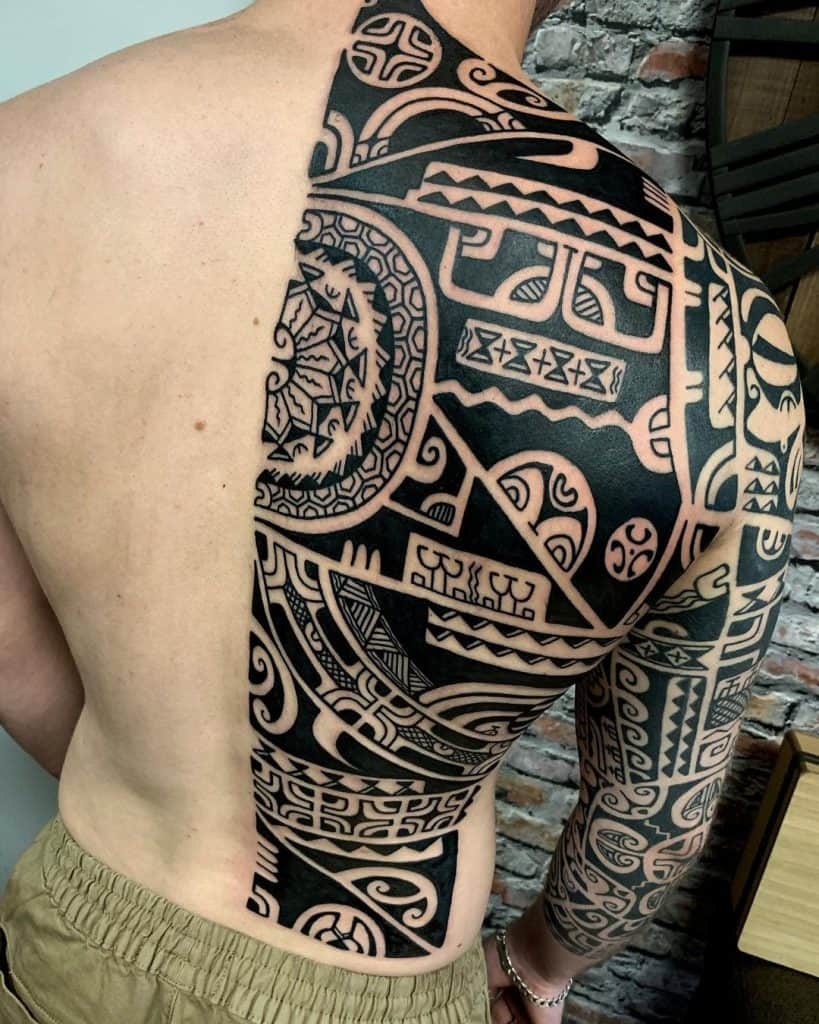
What is a Tribal Tattoo?
When most western people speak of tribal tattoos, they are talking about bold black lines and seemingly abstract patterns.

David Beckham, Jason Momoa, and Dwayne "The Rock" Johnson all have tattoos that would fall under the "tribal" category.
But using "tribal" as a catch-all tattoo phrase doesn't make sense.
In the simplest definition, "tribe" is a word for "a group of people."
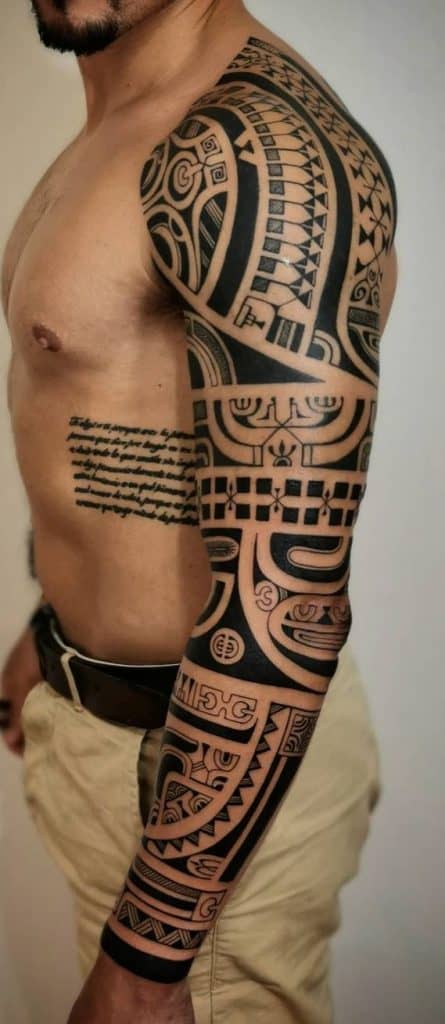
A tribe may be linked spiritually, culturally, or through bloodlines.
Some infinite peoples identify as tribes.
"Tribal" is an umbrella term for traditional markings from all over the world and throughout history.

Are Tribal Tattoos Cultural Appropriation?
Short answer, it depends on who you ask.
This is a conversation that can spark plenty of outrage.
Cultural appropriation means you have taken someone else's cultural identity and claimed it.
This could be through tattoos, hairstyles, clothing, and cultural dance.
So if you belong to the tribe who originated your art, no worries.
But if you don't, you may want to examine your motivation.
This can be an upsetting idea for people who appreciate the culture they are representing.
But is appreciation enough?
There are passionate people on either side of the argument.
Some say people outside of a culture getting their tattoos is appreciation.
Others say it's appropriation.
Some say it's OK if you know the meaning of the tattoo, others say it's never OK.
Some people don't care at all, reasoning that art always borrows from other art.
Which side do you land on?
You may not care about cultural appropriation yourself.
But if you're going to get a tattoo design from outside of your culture, you may want to explore how you feel about it.
Because the subject is going to come up.
First, the concept of cultural appropriation is nothing new.
A British artist and critic, Kenneth Coutts-Smith, published a paper on 'Cultural Colonisation' in 1976.
The conversation had been happening long before the Coutts-Smith contribution.
But he was the first to publish it in a scholarly context.
The idea may feel modern, but that is only because of the democracy of the internet.
More people can get their opinions out there than ever before.
Why Do People Get Upset About Cultural Appropriation?
This is a loaded question, but let's stick to the tribal tattoo side of things.
Most tribal tattoos come from cultural practices and rituals.
Tattoo application and tattoo designs would be part of those ancient rituals.
In many tribal situations, a person has to earn a tattoo in some way.
That, or it marks a transition from adolescence to adulthood.
The tattoo design will then be custom-drawn based on their family and life story.
The problem comes when someone, who has no idea what the symbols mean or where they come from, gets the tattoo on a whim.
It turns a centuries-old spiritual practice into a flippant fashion statement.
And, depending on which tattoo artist you work with, your tattoo design may not even make sense.
All those lines and shapes you admire so much have meaning.
To get them without knowing much about them would be like getting a realistic portrait of a deity you've never heard of.
It's not hurtful to you, but it makes people from the culture feel pushed aside.
Out of their own traditions.
Consider is how many tribes are perceived negatively from a colonial perspective.
They may be described as savage or unrefined.
But when a person gets a tattoo from a tribal culture, they're seen as edgy or sexy.
But What if I Appreciate the Culture?
If you appreciate the culture, then do it right.
Find out where your tattoo is from and what it means.
You'll love your tattoo so much more when it goes beyond a cool shape.
You'll be able to tell an interesting story and educate people about another culture.
Even if not everyone will be able to get on board with it, you'll show that you've put in the necessary work.
Most effectively, you could go to an artist from that culture who knows the traditional application methods.
If they're up for it, have a chat with them about how they feel about cultural appropriation.
Browse YouTube and listen with an open heart to a bunch of different perspectives.
This is going to be on your body forever, you owe that level of reverence to yourself and the people whose tattoo design you choose.
So, Can I Get a Tribal Tattoo or Not?
Ask yourself why you want the tattoo.
If it's because you have a deep connection with the culture, honor that with the proper research.
If you like your tattoo for purely aesthetic reasons, there's probably something more abstract you can get.
Ask your tattoo artist to design something original based on your body shape and the images you love.
That way you've created a piece with deep personal meaning to you, and you won't risk hurting anyone's feelings or communicating a message you don't even understand.
If you want something that represents culture and tradition but you are looking outside your bloodline, try checking out something close to home.
Many cultures have traditional tattoo techniques, and you may find something that makes you feel closer to your family tree.
Moving On…
Now that we've broken down cultural appropriation and you've had a chance to think about it, let's chat about tribal tattoos.
Which are the most popular tribal tattoo designs and where do they come from?
The History of Tribal Tattoos
Of the many styles of tattooing worn in the modern world, tribal tattoos are the most steeply founded in history.
While there are many varieties of generic tribal tattoos that are less symbolic than the tattoo style they are based around, many tribal tattoos carry heavy symbolism.
Ancient cultures used these distinctive tattoos to show off both the achievements and status of individual members of their societies.
They were also used to distinguish one tribe from another.
The tribal tattoos of today are typically more intricate than the popular tribal tattoo designs of twenty to thirty years ago.
Those that decide to get a tribal tattoo of their own also usually select their particular design with symbolism in mind.
To say that tribal tattoos have come a long way, however, would be an understatement.
This particular tattoo style has a long history (dating back around 5,000 years).
According to the evidence gathered by archaeologists, tattooing was practiced by tribal cultures all over the world dating back to at least the Neolithic times.
Types of Tribal Tattoos
Let's take a look at a few of the most popular tribal tattoo styles from ancient cultures.
Each of these tribal styles has found its way into contemporary tattooing in one way or another, holding different meanings and symbolism.
Borneo Tribal Tattoo
Made famous by Anthony Bourdain's Parts Unknown, the Iban people's tribal tattoos are a part of the culture that is re-emerging.
It is important to note that Bourdain got the tattoo in Borneo, Malaysia.
It was given to him by a famous Borneo tattoo artist, and he was permitted to have the tattoo.
The practice of tribal tattooing in Malaysia is very different than in American and Canadian customs.
In the Western world, you choose a tattoo design that resonates with you, and you get it tattooed.
In the tribes of Borneo, tattoos are a rite of passage.
A design is chosen for you based on your age, gender, and rank within the society.
In many tribal cultures, a tattoo is something you do for the greater community, both tangible and spiritual.
- Who Are the Tribal People of Borneo?
Borneo is a large island divided into 4 regions.
The regions are split between Malaysia, Indonesia, and Brunei.
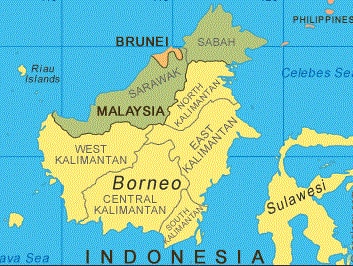
The Indigenous people in this area are known as the Dayak.
There are large tribes under the Dayak umbrella and even smaller tribes within those subsections.
Many Dayak people of Borneo live in a longhouse system.
A longhouse is sort of like a village but under one roof.
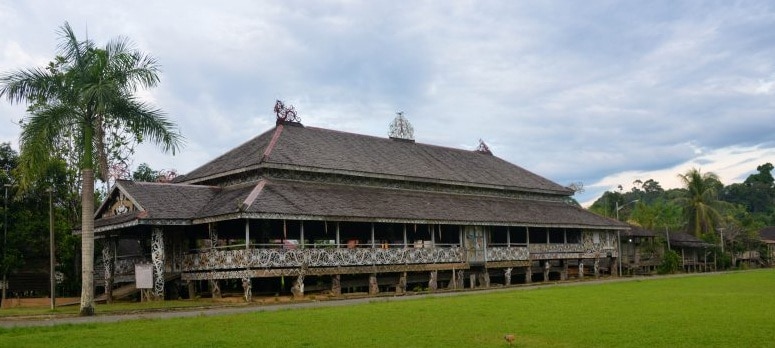
Some are simple settings for 4 families, but others are elaborate and can accommodate up to 80 families.
The typical structure comprises one main area with smaller sections built off of it.
Originally longhouses were made of wood, but the modern ones are made of concrete.
They are becoming less populated in modern-day, as youngsters often move from longhouses when they're old enough to get jobs in the city.
For many, the Dayak people's reputation precedes them.
The warriors were known to be headhunters.
When going to war with another region, they would warn the people of the area in advance.
It was never their mission to headhunt women or youngsters, so they gave them time to exit the area.
After that, it was up to the men of the family to defend their space.
The Iban people are a more dominant tribe in the Dayak group, especially in Sarawak.
The Sarawak tribal tattoos are linked to their confrontations and are thought to be protective charms.
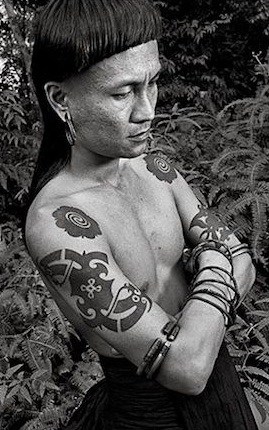
In the 1940s, a group of Iban people fought a group of Japanese troopers.
The Iban people had only their spears and their tattoos to protect them, so it sounds like a hopeless situation.
All but one of the warriors came home alive, though.
So there may be something to the charming tribal tattoo idea.
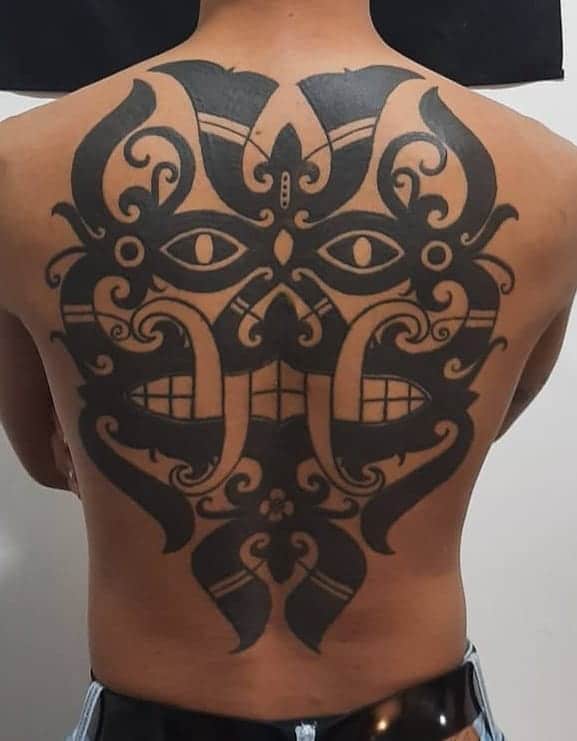
Tattoos in the Dayak Culture
Customs vary from tribe to tribe.
Tattoos are most common in the Iban tribe, who collect their ink through life experience.
An Iban person's tattoos read like a diary to those who understand the symbols.
A young man traditionally starts with two flower-like shape tattoos on the fronts of his shoulders.

They are placed there because they align with the straps on his backpack, which he will wear as he ventures out from the longhouse to learn about life.
This process is known as Bejalai, translating to a "journey of knowledge and wisdom."
The flower is called a Bungai Terung, or "eggplant Borneo flower."
The eggplant flower features a swirling shape.

This shape symbolizes a tadpole, meaning new beginnings, and it also represents the "rope of life."
From there, once the young man has proven himself, he may collect other tattoos.
In some tribes, his way of proving himself would be to headhunt for the first time.
He may then be granted a neck tattoo accompanied by a ritual.
For the Highlanders in Sarawak, it was traditionally more common for women to have tattoos.
This could be a measure of beauty, wealth, or status.

It may also attract men from other longhouses to marry the women.
Women may also get tattoos to show their skills.
Hand tattoos generally signify that a woman is a master weaver.

In Iban culture, it is a special skill to be able to weave ceremonial blankets.
These are known as Pua and, while sacred, can attract meddling spirits.
While weaving, these spirits may try to distract the women's efforts.
Hand and limb tattoos would serve to protect them as they worked.
Weaving a ceremonial blanket was considered just as important to the tribe as headhunting.
So, while there is a gender divide there, it is one where both sides are revered for their contributions.
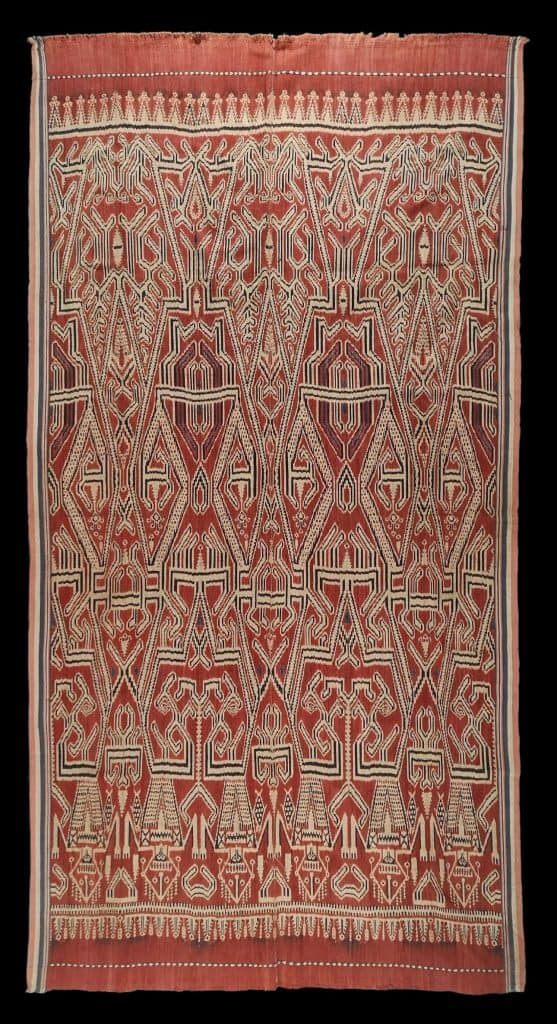
The Shifting Meaning of Borneo Tattoos
Of course, over time, tattoo styles and meanings have changed.
According to Point of No Return, a short documentary on Iban tattoos, tourists are part of the reason tattoo trends have changed.
As people began to visit the area, they would become enamored with the fantasy of having a tribal tattoo for themselves.
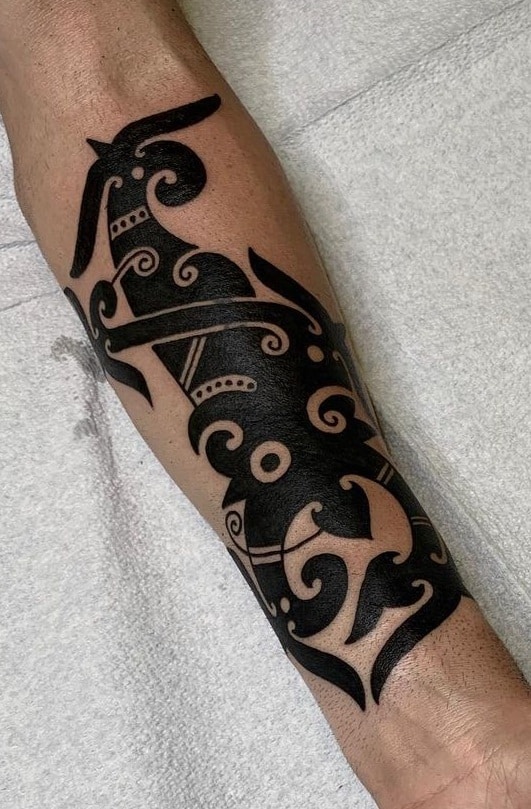
Of course, the Iban tattoo artists needed to make a living, but they didn't want to give their sacred symbols away.
They would then make up "sacred" symbols and spin stories to the tourists who got them.
A harmless practice that benefits both parties, but it has kind of muddied the waters of tattoo meaning.
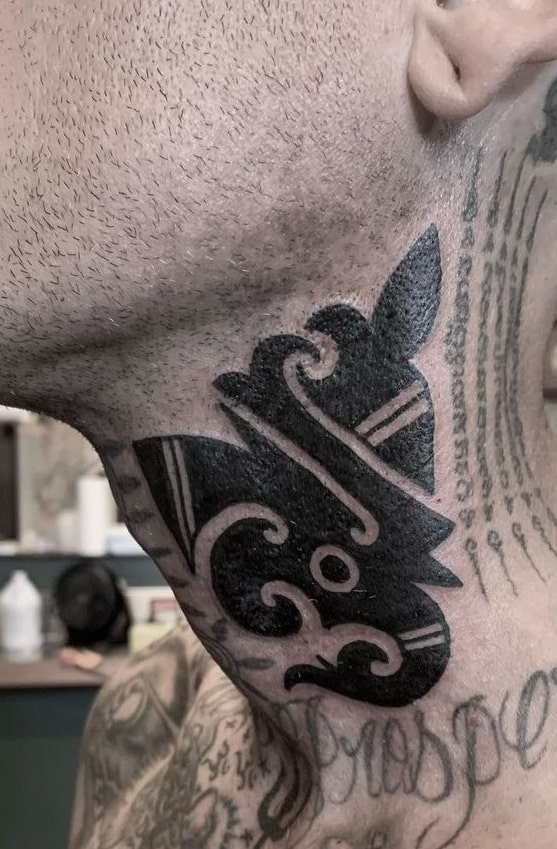
In addition to the tourist element, many tattoo traditions were lost in time as more Christians entered the area and converted the people there.
There is a modern effort to revitalize the traditional tattooing in Borneo, but there was a long period of lessened activity after the 1950s and 1960s.
Borneo Tattoo Methods
Tattooing is generally done the old-fashioned way, with two simple instruments.
One is a long stick with 3 needles on the end, and the other is a "striker" used to rhythmically tap the needles into the skin.

A carved wooden block is used as a stencil, and once the tattoo design has been transferred to the skin, the tattoo artist sets to work.
The ink is made from soot, water, and sugar cane.
Traditionally, the soot was scraped from the bottom of a metal pot.
Polynesian Tribal Tattoos
Perhaps one of the most popular styles of tribal tattoos is the Polynesian tattoo.
Of the many people sporting tribal tattoos today, a great majority of them are in the Polynesian tribal tattoo style.
A few common elements of Polynesian tribal tattoos are ocean waves, spearheads, shark teeth, and the enata – a tribal symbol of the human figure.
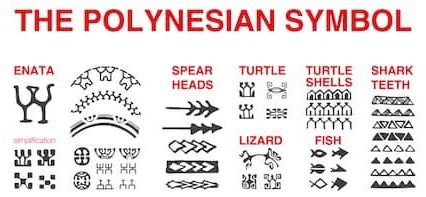
Along with having specific meanings conveyed through the use of certain imagery, placement also holds an important meaning when it comes to Polynesian tribal tattoos.
For example, ancient Polynesian tribes would place their tribal tattoos on the limbs and shoulders to symbolize bravery and strength while tattoos on the forearms and hands were indicative of creativity.

Polynesian Tattoos: Samoan Tribal Tattoos
Ancient Samoan cultures used tribal tattoos primarily as a way to indicate status within their tribe.
Māori tattoos are only one part of the Polynesian tribal tattoo tradition.
The word Polynesia comes from the Hellenic words "poly" meaning many, and "nēsos" meaning island.
New Zealand is part of this group, but so are more than 1000 smaller islands.
All Polynesian people share ancestry and similar customs.
But there are differentiations between each island.
One distinguishing factor is their tattoo practices.
Symbolizing strength, authority, and rank, Samoan tribal tattoos symbolized the hierarchy of the Samoan tribe.
The process of tattooing in Samoan culture was a painful process as these tattoos were usually created using tools such as a shark tooth.

For this reason, it was considered greatly dishonorable within the tribe to have an incomplete tattoo as this suggested a lack of determination.
In all Polynesian cultures, tattoos are meant to tell your life story.
This is why you are supposed to have a Polynesian artist design your tattoo.
If you lift some tattoo design from a web search and copy it, you are essentially taking someone else's story.
And you may not even know what any of the imagery means or which island it comes from.
One of the more famous tribal tattoo styles to come out of Polynesia is Samoan.
Samoan tribal tattoo practices are at least 3000 years old.
Colonization was a threat to this ancient practice.
But Samoans held onto their tattoo tradition throughout their whole history.
Other Polynesian tribes have long tattoo traditions, but experienced significant dips in popularity.
The Māori people, for example, have recently begun to incorporate traditional face tattoos back into the culture.
They fell out of favor in the past because of enforced negative associations.
- An Importance on Community
Samoa is an archipelago or group of islands.
There are 9 islands in the Samoan archipelago, which include Samoa and American Samoa.
Polynesian people live in a community-based culture.

In this structure, people act for the good of the whole rather than with self-interest.
Depending on which area of Polynesia you are in, there are variations on this community theme.
For Lilo and Stitch fans, for example, you may recognize the word "Ohana."
Ohana does mean "family," but it extends to your entire community as a whole.
Because many Polynesian Islands are small, it is natural to be tight with the people you grew up with for your whole life.
In Samoa, their variation on this ideology is called "Fa'a" or "Fa'a Samoa."
This translates to "The Samoan Way."
Fa'amatai is the governing concept in Samoa.
Everyone has a role to play in society, from the highest ranks to the most average person.
Many tourists who visit Polynesian islands note how warm and friendly the people are.
But kindness and consideration aren't considered a special act in Fa'a.
Being welcoming is a way of life.
That is why it is so unfortunate when someone chooses to copy a traditional Polynesian tattoo.
Family is sacred, and their stories are important.
What's more, the welcoming people of Polynesia would likely have designed something custom for you.
Some tattoo designs are considered sacred in Polynesian culture, while others are not.
A non-Polynesian person can get certain elements of a Polynesian tattoo.
They can even weave their own backstory into it with non-traditional elements.
This is a better idea for everyone involved, and it's special because it's personal.
There have been rare exceptions when a person outside the community was approved for a Tatau.
One example is Elsie Bach, who volunteered with the Peace Corps in the '70s.
She worked respectfully within the Samoan culture as a teacher and educator.
Because of her great work, she was given a high-ranking title by a Samoan chief (Matai.)
She was then gifted with a tattoo as part of this title.
Samoan Tattoos
The Samoan word for tattoos is Tatau or Tatatau.
It translates to "to mark," or "to strike repeatedly."
It is a painful process. And that's part of it.

Polynesian tattoos have a spiritual component to them.
The pain experienced in Tatau shows courage and determination.
It is what separates real men and adolescents.
The tattoos can take hours and even days to apply.
After that, the aging process may take weeks.
It is meant to be a painful process and to deny a Tatau is to show cowardice.
A Tatau not only tells your life story but also establishes your rank in the community.
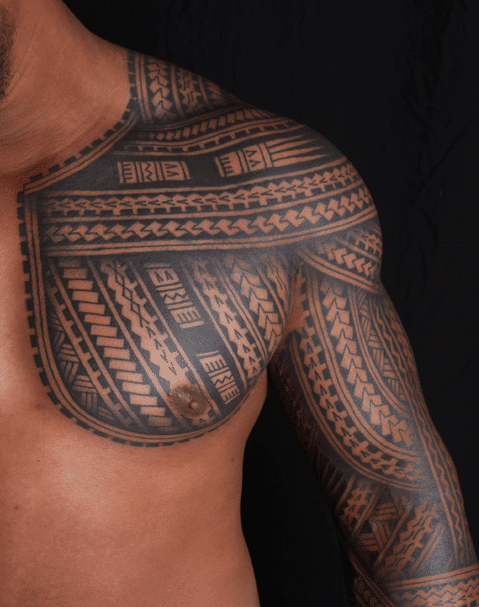
Types of Tatau
Within the Samoan tattoo practice, there are 2 main types of tribal tattoos: Pe'a and Malu.
Pe'a is the male form of Tatau.
Traditionally, Pe'a will start mid-torso and go down to the knees.
The tattoo designs are done in intricate black ink.
There are elaborate rituals and ceremonies that accompany the application of Pe'a.
After the fact, the skin is routinely massaged and washed with saltwater by members of the community, for hygiene purposes.
Malu is the female form of Tatau.
The tattoo designs are generally smaller and more delicate in Malu.
They are usually on the thigh and leg, or the hands.
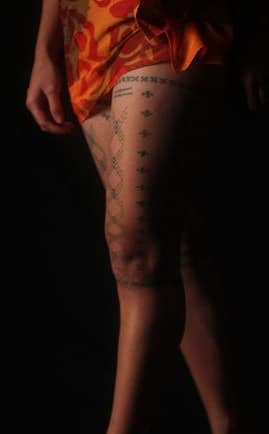
When Malu is applied to the hands, it is called Lima.
Lima markings are necessary to serve a ceremonial mix called Kava.

The mix is derived from the root of the sacred Kava bush and is not used outside of the ceremony.
Samoan 'ava ceremonies serve to give a person a new title, welcome someone into the community, or say goodbye.

The mix can put a person in a trance-like state.
It is thought of as something of a truth serum when open communication is important.

- The Two Sisters
According to legend, Tatau was brought to Samoa from Fiti by two sisters.
The sisters, named Taema and Tilafaiga traveled from Fiti to Samoa.
The whole way there, they sang a song about Tatau.
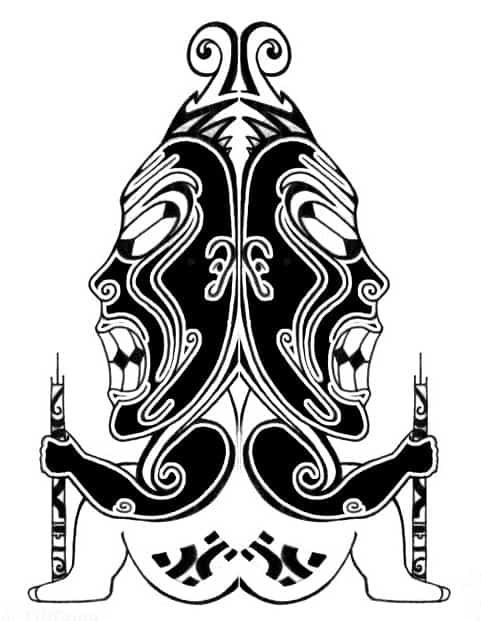
In the original song, they said Tatu is for women and not men.
By the time they reached Samoa however, the words had been reversed and it was communicated that Tatau is for men.
Now it is equally as common for any gender of Samoan person to receive Tatau.
Polynesian Tattoos: Māori Tribal Tattoos
Māori tattoos are known as Ta Moko.
The tribal tattoo designs specific to Ta Moko are only for the Māori people.
As a compromise, equally beautiful tattoo designs are available to outsiders.
These are called Kirituhi.
A Māori tattoo artist can design something with great significance for a non-Māori person.
But some symbols and traditions are sacred to the culture.
Ta Moko are considered treasures, or taonga.
They are sacred and they assert your Māori heritage.
The Māori people are an indigenous tribe who lives in New Zealand.
There are approximately 75 Māori tribes (Iwi) in New Zealand.
Tribes are then divided into smaller sub-tribes called hapu.
Each tribe has its own distinct style when it comes to clothing and tattoos.
In New Zealand, a Ta Moko shows other Māori people which tribe you belong to and your social rank.
But Why Can't I Get a Ta Moko?
In short, because the Māori have had to lock horns to exist on their own land.
Taking away something sacred, especially when they've offered an alternative, is disrespectful.
The Māori people came to New Zealand from Eastern Polynesia between 1200 and 1300 AD.
Before their arrival, the land is believed to have been unpopulated.
It was discovered by the Māori people on trips through the Pacific Ocean.
The land was discovered by Europeans in the 1700s, and explorers started visiting.
In the 1830s, the British colonized the area.
They sought out to reduce what they called lawlessness on the land.
Their main goal was to colonize before the French, who were considering the area as well.
The word Māori was invented among the people at that time.
It translates to "ordinary," and served to differentiate original tribes from the newcomers.
Between the 1840s and 1860s, a war broke out between the Māori and the British.
The British people fought to reign over the land.
Māori people who objected would have their land taken away from them as punishment.
The Māori people have had to make efforts to keep their traditions alive.
For someone to wear a Ta Moko is the ultimate sign of cultural pride.
This is especially true of the face tattoo.
Placement of Māori Tribal Tattoos
In Māori and Polynesian traditions, tattoo placements enhance the meaning of a tattoo.
Face or Head
Your head is the closest part of your body to Rangi, the sky god in Polynesia.
To get a Ta Moko here is a cultural statement and a spiritual gesture. Some people have Ta Moko across their whole face.
This can look scary to outsiders, but it is meant to enhance facial expressions.
Women often wear Ta Moko on their chin for the same reason.
Facial expressions are known as Pūkana, and are a big part of the Māori cultural dances.
These dances are known as Haka. During certain parts of the song, women will widen their eyes and stick out their chin tattoos.
Men will also widen their eyes, but stick out their tongues.
These expressions represent passion and power.
Articulations
Tattooed articulations in the Māori culture can represent familial connections.
Limbs and Shoulders
This part of the body represents strength. Ancient warriors would often get Ta Moko on their upper limbs and shoulders.
Hands and Lower Limbs
We craft things with our hands. Tattoos in this area celebrate creation and artistry.
Chest
Because the chest holds the heart, this area represents generosity.
Lower Belly and Thighs
Similar to the sacral chakra, this area of the body represents sexual energy and courage.
It is also associated with the family.
This is a very important concept in the community-based Māori culture.
Legs and Feet
This part of the body represents transformation, as well as forward momentum.
How are Ta Moko Applied?
Modern artists may use traditional tools, modern tattoo machines, or both.
Some shapes can not be achieved with traditional tools.
Artists with modern equipment try to stick as close to the original look and shape as possible.
The Ta Moko was originally applied using a small chisel.
This chisel is known as a Uhi. The Uhi makes cuts and "carves" the skin with almost the exact same techniques an artisan would use on wood.
This is a painful process that produces a unique effect on the skin.
These cuts would then be drawn with naturally derived ink to create the tattoo.
Though the original chisels were made from bone, they eventually upgraded to metals.
Mike Tyson Māori Tattoo
Mike Tyson, a retired boxer, got his famous face tattoo in 2003.
He originally wanted hearts in the shape of an eye patch around his eye.
Tyson has said he was going through a dark time and didn't care much for himself.
He wanted to mark his body up as a result of those negative feelings.
His tattoo artist convinced him to get his now-famous face tattoo.
Tyson has said he got the tattoo "because he is a warrior."
But warrior tattoos in Māori culture cover the whole face.
And Māori people see their facial tattoo as Ta Moko- not Kirituhi.
His tattoo is not really traditional in its completion.
But it caused some wrangle because of its visual similarities to Ta Moko.
The tattoo artist did draw inspiration from photos of Māori warriors.
Though it came from a dark time, Tyson has accepted the tattoo as a part of his image, and sometimes even forgets he has it.
The trouble is that now tribal facial tattoos are more famous for Mike Tyson than they are for their roots.
If you are inspired by Ta Moko, it would be best to see a Māori artist (or write to one from where you are) to be sure you get it right.
Kirituhi designs are available to anyone.
Hawaiian Tribal Tattoos
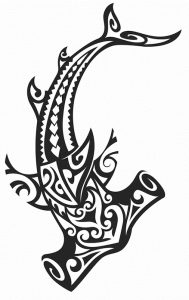
Hawaiian tattoos are yet another ancient tribal tattoo style that has become popular in contemporary tattooing.
Popular imagery found in this style typically includes flowers, turtle tattoos, and abstract tattoo patterns.
While tribal tattoos in ancient Hawaiian cultures were representative of both adulthood and status within the tribe, they were also considered talismans with protective abilities.
Native American Tribal Tattoos
With nearly every tribal culture engaging in tattooing throughout history, the Native Americans are no different.
The main difference between Native American tribal tattoos and other tribal tattoo styles, however, is their symbolism and imagery.
Popular Native American tribal tattoo imagery used in contemporary tattooing includes dream-catchers, arrows, animals, feathers, and abstract tribal patterns.
In Native American culture, tribal tattoos were used for both ritualistic and identification purposes as well as providing protective properties to the wearer.
For Native American warriors, tribe members would receive tribal tattoos as a mark of their heroism.
For other members of specific tribes, tribal tattoos were used to identify themselves as part of their community.
Still, other tribes considered their tattoos to be supernatural in power, granting them protection through a connection to the spiritual realm.
Mayan Tribal Tattoos
The ancient Maya civilization is a fascination for many.
But the Maya are often spoken about in the past tense.
It is important to note that the Maya are still present in the modern world.
There are approximately 6 million Maya in the world today.
Most Maya tribes are located in Mexico.
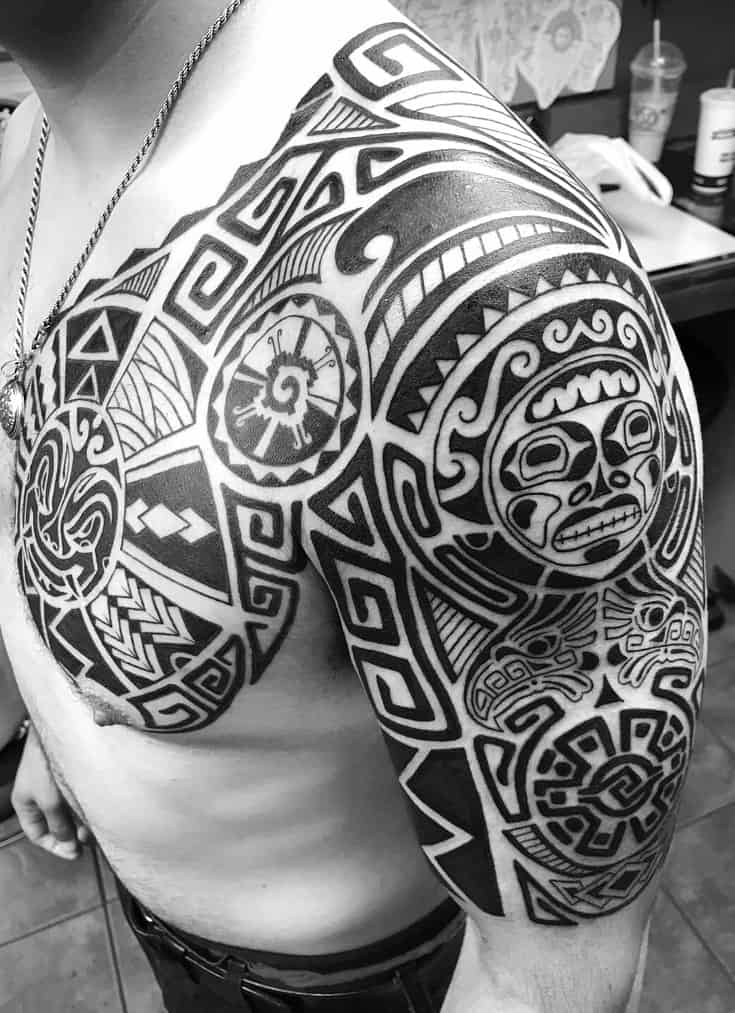
Under the Maya umbrella, there are 31 distinct tribes.
Though all the languages and customs come from the same root, there are distinct variations among them.
Mayan tribal tattoos are an important part of this culture.
As with many tribal cultures, when Christian colonialism came to the area, tattoos were seen as savage and unrefined.
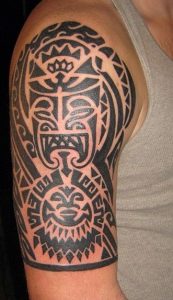
For a person with a Mayan background today, wearing a traditional tattoo is a sign of pride.
Mayan tribal tattoos were usually religious in symbolism.
With the Mayan culture centered around both scientific and cultural pursuits, the focus of this culture is evident in the symbolism found in their particular tattoo style.
In Mayan culture, getting a tribal tattoo was seen as an act to please the gods.
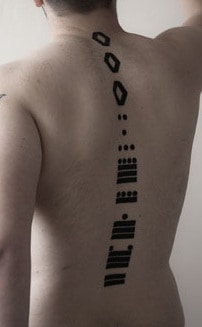
Alongside piercings, tattooing was an important body modification tradition within the culture.
Mayan tattoos were also considered a mark of strength and courage but there was yet another purpose to their tribal tattoos- marking outlaws.
Upon winning a victory over rival tribes, the Mayans would mark the surviving members of the enemy tribe with a tattoo.

Thieves within their society were also marked with tattoos to indicate their treachery.
- Where Do The Maya Come From?
The Maya civilization began in Mesoamerica.
Mesoamerica comes from the Hellenic term "middle America."
An archaeologist named Paul Kirchoff coined the term Mesoamerica in 1943.
He was of mixed heritage, having German and Mexican parentage.
He helped define the area based on the characteristics of the people who lived there.

The territory starts in central Mexico and goes into Central America (including El Salvador, Belize, Honduras, and Guatemala.)
The term "Mesoamerica" comes from the fact that the area is spread out across North and Central America.
The Mayan culture is one of the more famous ones in the area, along with the Aztecs, but it is very diverse.
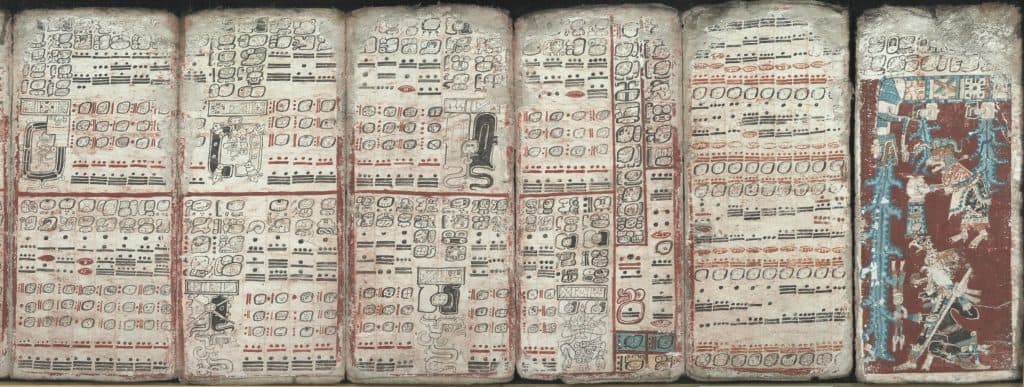
They also had innovative approaches to agriculture and language.
The Maya culture is a complex, polytheistic system.
Symbolic concepts from the culture's time as a major empire are still practiced today.
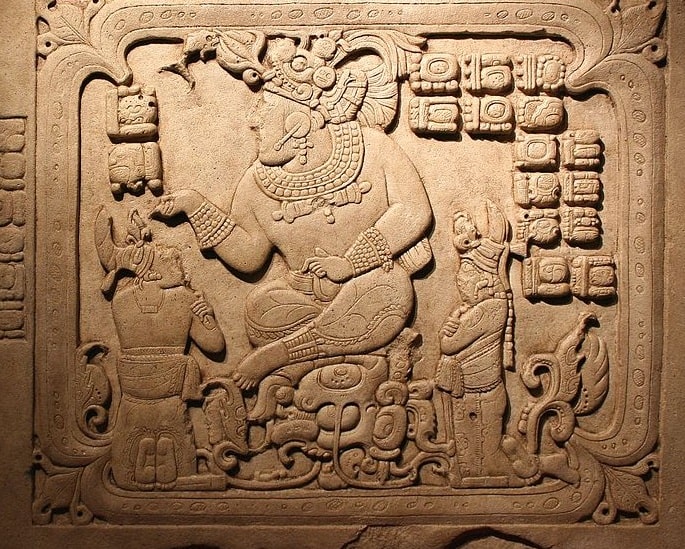
In the Maya calendar, there are natural cycles of creation and deletion.
This is what caused the worldwide hurly-burly over the "end" of the Maya calendar.
But the Maya calendar was never meant to predict the end.
It was meant to predict times of turmoil and, eventually, rebirth.
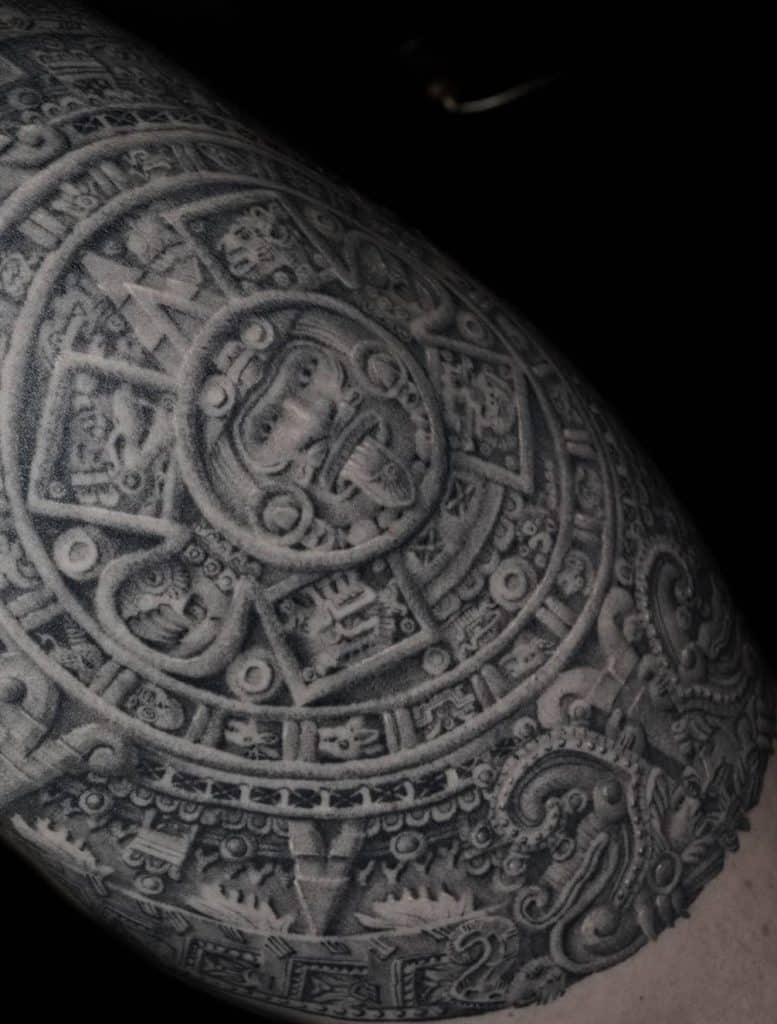
One such cycle may have happened in 900AD, when the Maya had abandoned their stone cities.
Historians remain puzzled as to the reason for this rec.
It could have been based on a number of agricultural or environmental factors. Or maybe it was just time for a new cycle.
The biggest hit to the Maya peoples was during their colonization in 1521.
Over the next 170 years, the Spanish fought for dominance over the Maya.
During this time, the Maya experienced various diseases, brought in by those trying to take them over.
Having no natural immunity to these foreign diseases, they began to peter out.
The Mayas who survived were pushed to turn their back on their old customs.
If Maya refused to convert to Christianity, they were held up.
During this time, many valuable Maya artifacts got lost.
Certain aspects of this ancient civilization are still relatively unknown today because of this conquest.
After regaining their independence in 1820, some members of the Maya culture were able to help the remaining language and customs survive.
What Does All This Have to Do With Tribal Tattoos?
It's important to understand this history before considering a Maya tribal tattoo.
Maybe you have a tie to the Maya culture that makes their imagery significant to you.
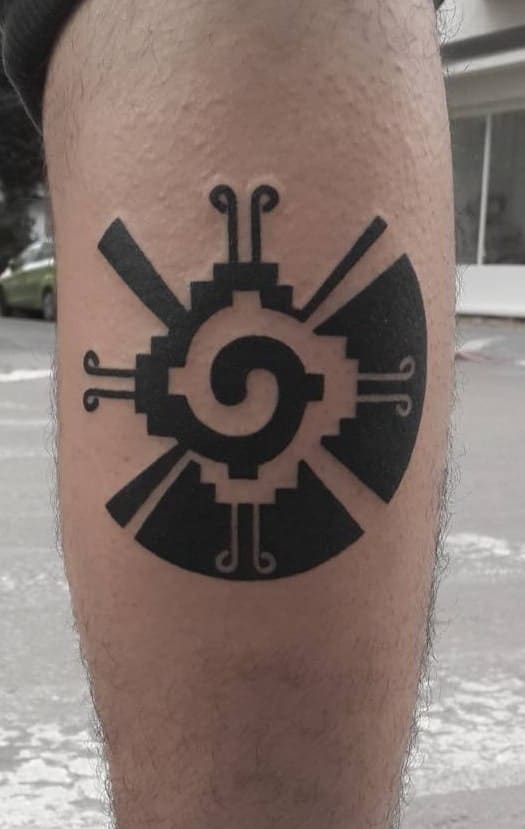
It is not inherently bad to want a Maya tattoo.
But do not take on these images without understanding the pain that went into preserving them.
To take something that people tried to protect, and get it for flippant reasons, is not a good idea, to say the least.
Maya Tribal Tattoo Customs
The Maya have erroneously been portrayed as a wild culture that took part in human sacrifice.
This was because when some ancient Maya vaults were uncovered, there were bones missing.
This is now believed to be because the remains likely had to be moved at some point.
The Maya did not make human sacrifices, but they did believe in offering lifeblood to their gods.
Part of this custom involved piercing and tattooing.
As with other tribal tattoos, to get a Maya tattoo was a religious act.
They had many body modification customs, many of which were for their gods.
Others were for purely aesthetic reasons.
These were not unlike the myriad of things we do today to make ourselves feel beautiful.
One Maya custom was to affix a piece of jade into a person's teeth.
The Mayan form of tattooing involved inking a design onto a person's skin, then creating cuts all along the markings.
The inky pit was the tattoo.
As you may have guessed, this form of tattooing left someone vulnerable to side effects.
To get a tattoo and resist the pain involved was considered an act of bravery and devotion.
Maya Tattoo Imagery
Tattoos would often depict epic religious mythology and deities.
The imagery would be incredibly specific to the people and show not only their rank but also their skill set.
A tattoo may also represent someone's place in the complex religious systems of the ancient Maya.
There are common elements in Maya tribal tattoos that reflect the belief system of the people, including:
- Sun
The Sun is a godly figure in the Maya belief system and is central to many practices.
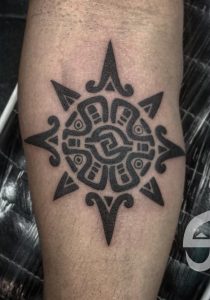
- Earth
The Earth represents the cycles in the Maya calendar and a reverence for nature.

- Eagle
Because an Eagle can fly so incredibly high, it is considered a divine creature.

It represents wisdom because of its bird's eye perspective on the world.
- Bats
Bats represent the underworld, as they were thought to be guardians there.
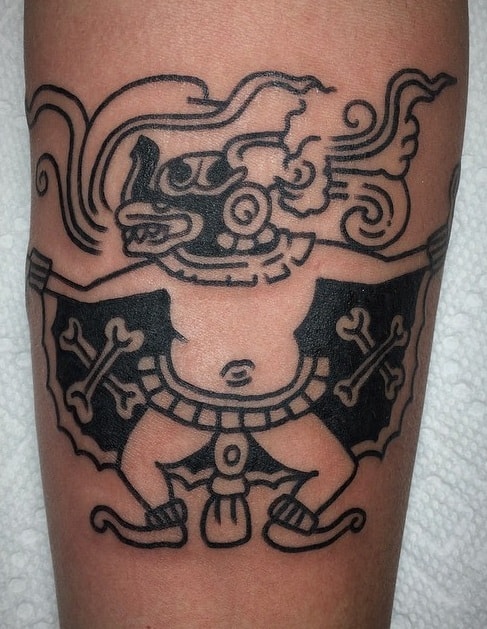
They can represent the duality of human nature: The ephemerality of life and the beauty of rebirth.
- Calendar
Because the Maya calendar is so unique and the subject of so much speculation, wearing one is a sign of Maya pride.
What Do Tribal Tattoos Mean?
Now that you have an understanding of the rich history associated with the tribal tattoo style, you are likely wondering what some of the contemporary tribal tattoo designs of today mean.
After all, the ancient tribal tattoo designs that the contemporary tattoos of today are based on were rooted in significant symbolism and meaning.
While this is less of the case today, tribal tattoos can still carry heavy meaning for the wearer.
Today, most tribal tattoos mean a show of masculinity, strength, and bravery.
People who are descendants of one of the ancient cultures associated with tribal tattoos may also get a tribal tattoo to pay homage to their ancestors.
Overall, the tribal tattoos of today are indicative of courage and strength, making them an especially attractive choice for men.
Who Are Tribal Tattoos For?
While tribal tattoos today are most popular among men, anyone can get a tribal tattoo.
Depending on the meaning and symbolism that the wearer wants to portray with their tribal tattoo, these tattoos can vary drastically.
Women tend to stick to more feminine imagery such as flowers and animals while men elect to use thicker lines and abstract patterns to complement their muscle tone.
Overall, however, tribal tattoos are for anyone with a deep appreciation of the culture that inspired them.
Tribal Tattoo Placement
So where should you place your very own tribal tattoo?
Placement is an important consideration to make when deciding on the perfect tribal tattoo design for you.
You should take into consideration the meaning you are trying to portray with your tribal tattoo design to help you choose the perfect placement.
You should also consider the particular cultural style of tribal tattoo that you are interested in when choosing a location for your tattoo.
This is because certain cultures considered particular placements to hold significant meaning.
For example, the Polynesians considered tattoos placed on the limbs and shoulders to be symbolic of strength and bravery while tattoos on the hands were indicative of creativity.
In order to determine the best placement for your tribal tattoo, you should also consider the imagery you will be using.
If you will be using thick abstract lines (a popular choice of the contemporary tribal tattoos of today), you will need to pick a part of the body that allows sufficient space to hold these details.
After all, it would be a shame to fall in love with a certain tribal tattoo design only to find that it doesn't fit where you mean to place it!
- Tribal Shoulder Tattoos
Depending on the reasoning for getting a tribal tattoo, it is a statement piece.
There are usually black thick, intricate, and abstract tattoo designs.
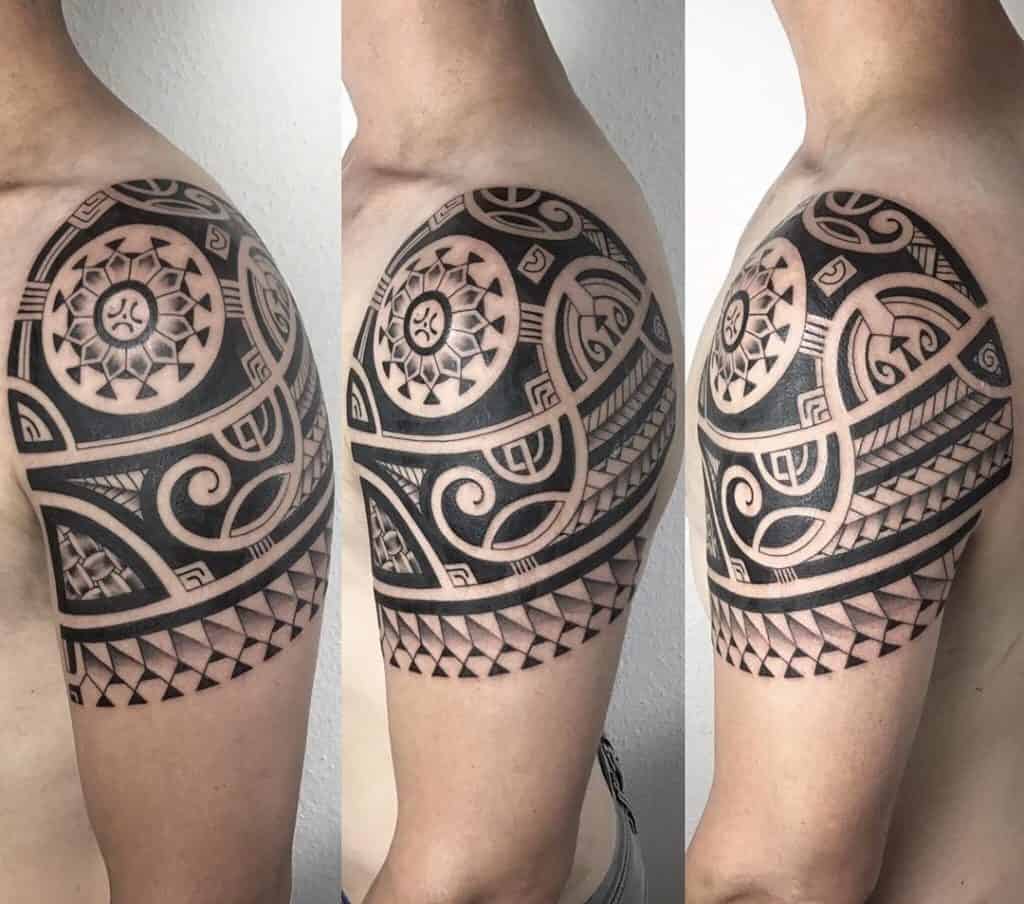

If you are looking to still make a statement on a larger part of your body but also have the option of covering it up, consider your shoulder when getting your tribal tattoo done!
- Tribal Forearm Tattoos
Even though your forearm is much smaller than, say, your shoulder, it is still possible to achieve that intricate piece.
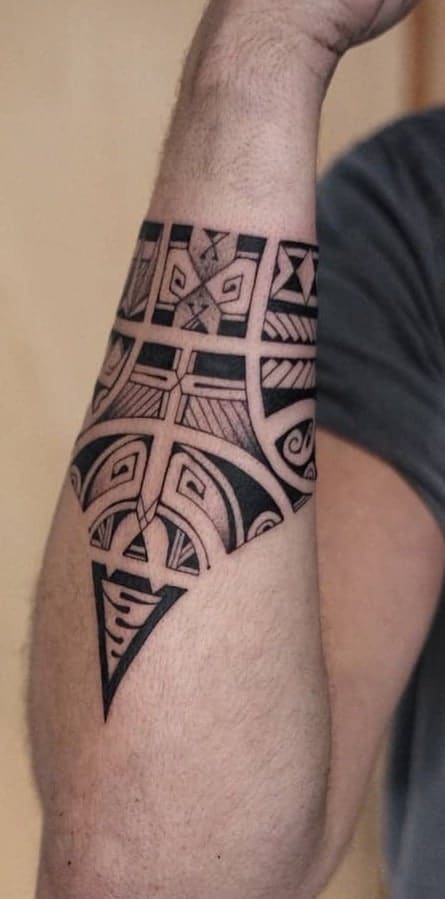
The tribal tattoo may be of a smaller design, but that does not mean it won't portray the same effect.
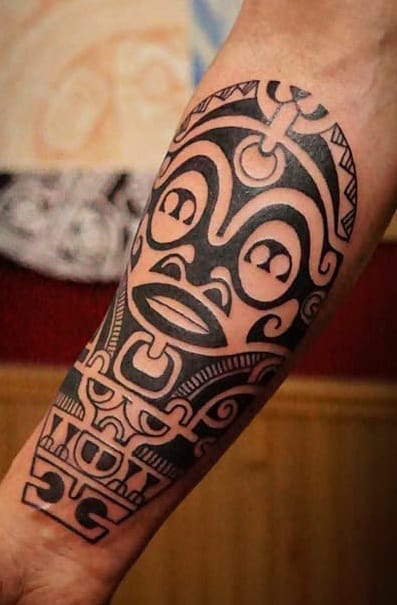
They are bold whether you get a tribal face or the abstract lines.

- Tribal Leg Tattoos
Having the option to cover up a tattoo but also showcase a large-scale piece can be tricky.
Luckily, your leg is the perfect canvas to achieve just that!

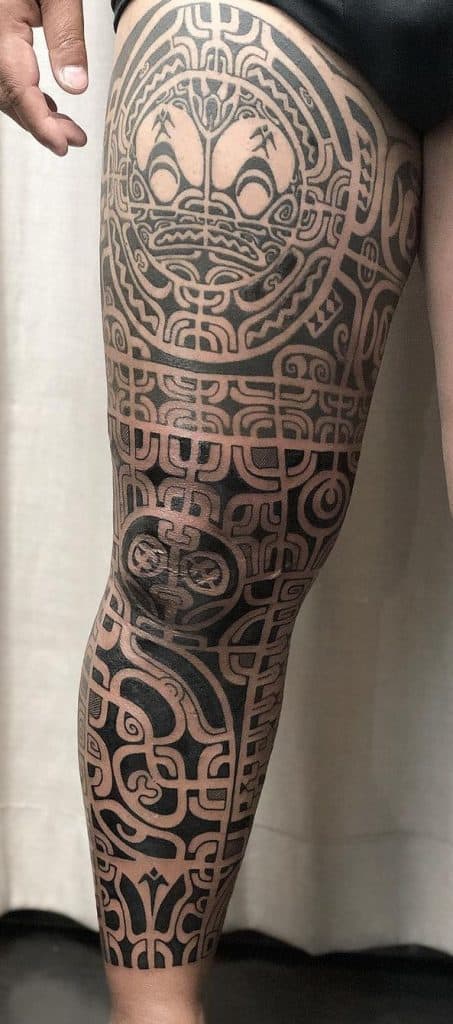
Get as bold as you'd like to because you have the choice of when you want to show it off or not!
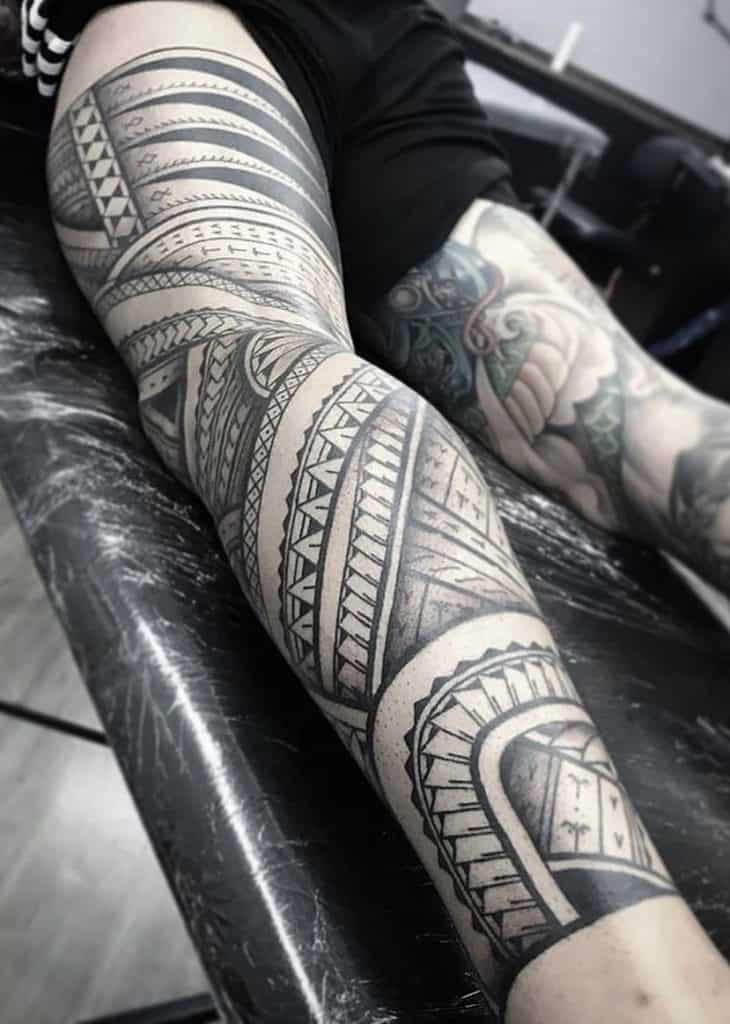
- Tribal Tattoos on Back
A tribal tattoo on your back has the same perks of being able to cover it up at your leisure, similar to your leg.
The design details are endless.
Your back is the perfect tattoo canvas to showcase those little details.
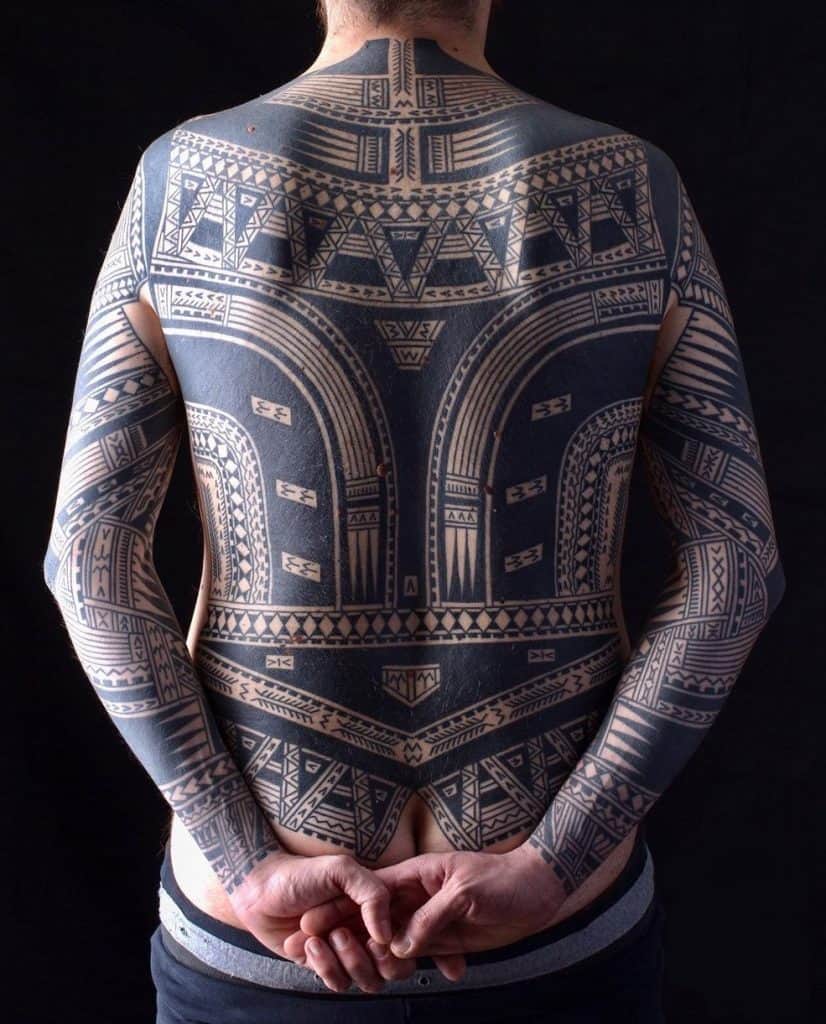
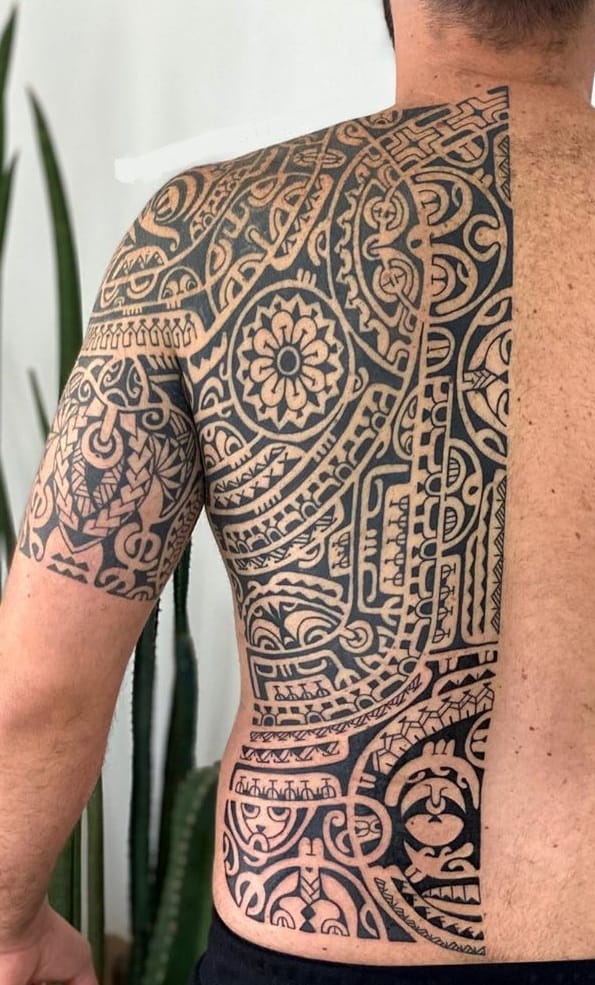
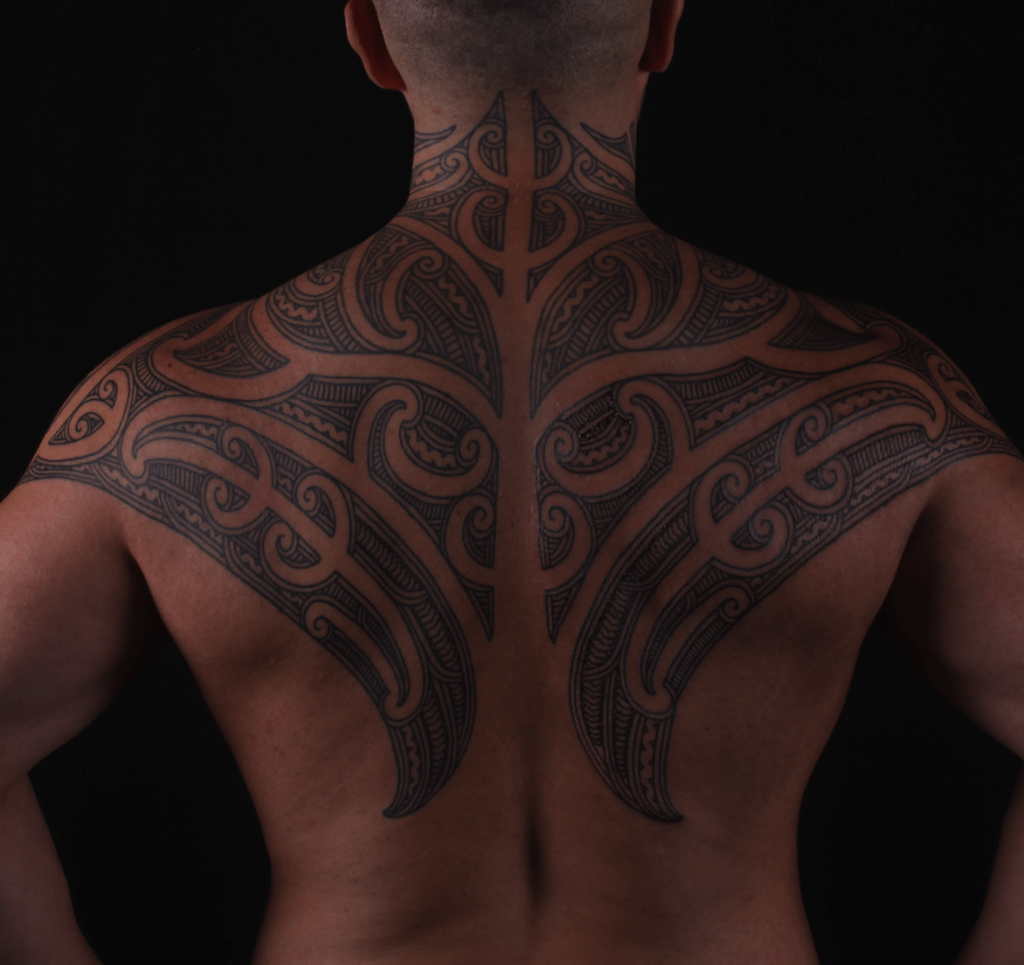
- Tribal Chest Tattoos
Why not choose a tribal tattoo design that starts on your chest and wraps it around your shoulder?
This is an excellent starting point if your goal is to have a sleeve of these exciting tattoos.
You can get each tattoo section done piece by piece, which will eventually become your finished masterpiece!
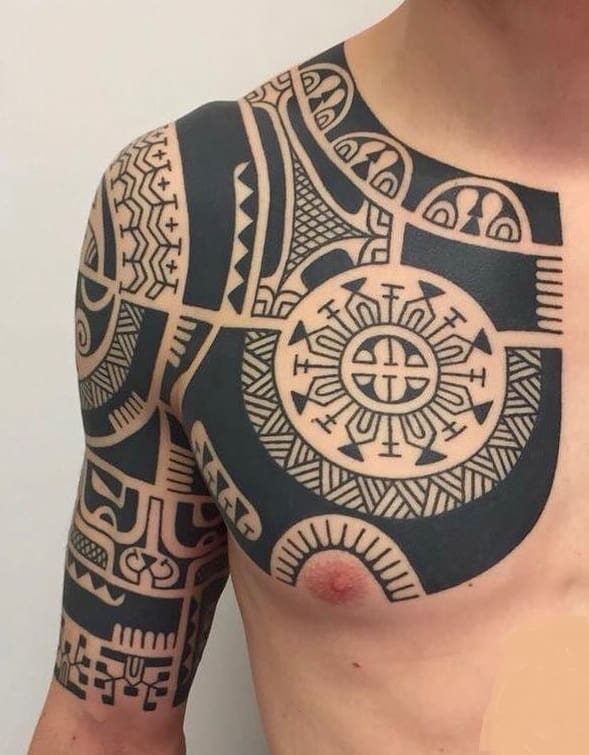
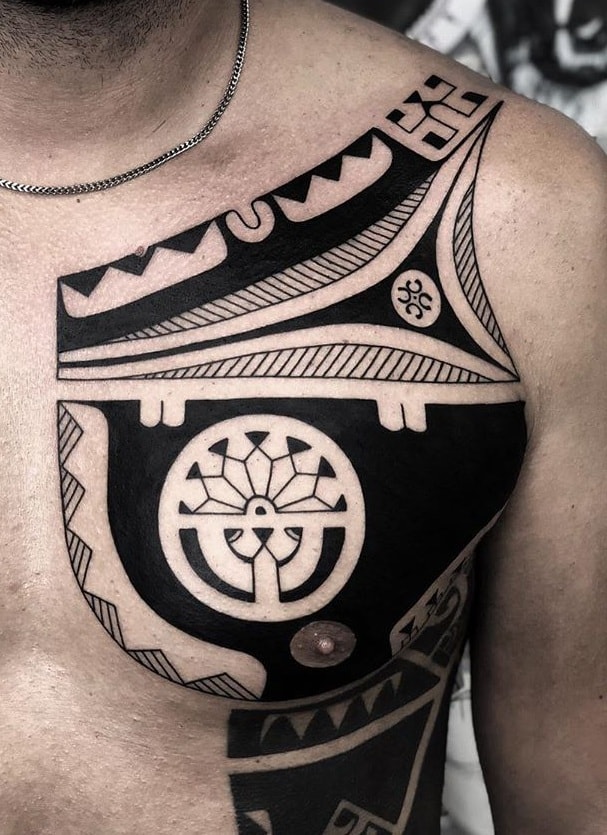
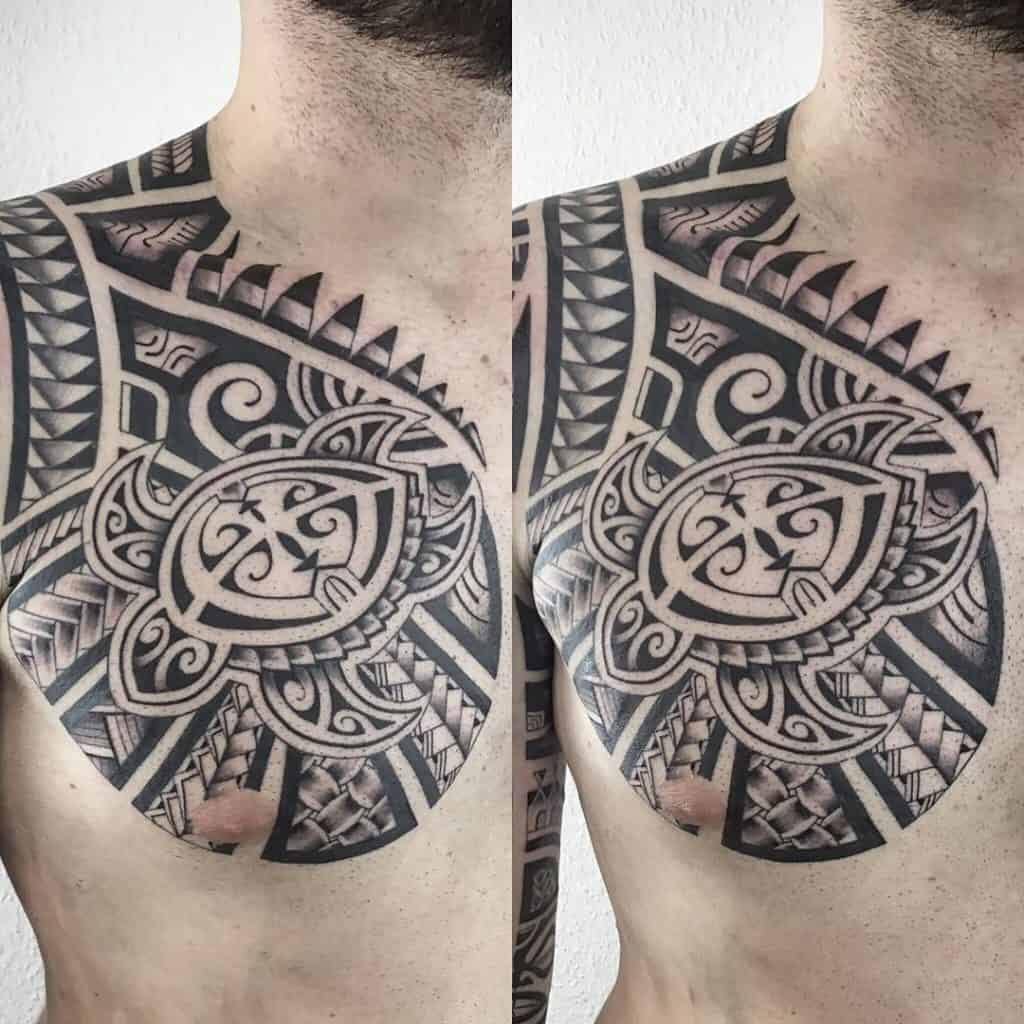
- Tribal Tattoos on Hand
You went through the needles, long hours in the chair, and hand-picked your design, so why shouldn't you show off your tribal tattoo?
If you have no problem having it where the world can see, maybe choose your hand as the placement.
Nothing says hello, like a tribal tattoo handshake!
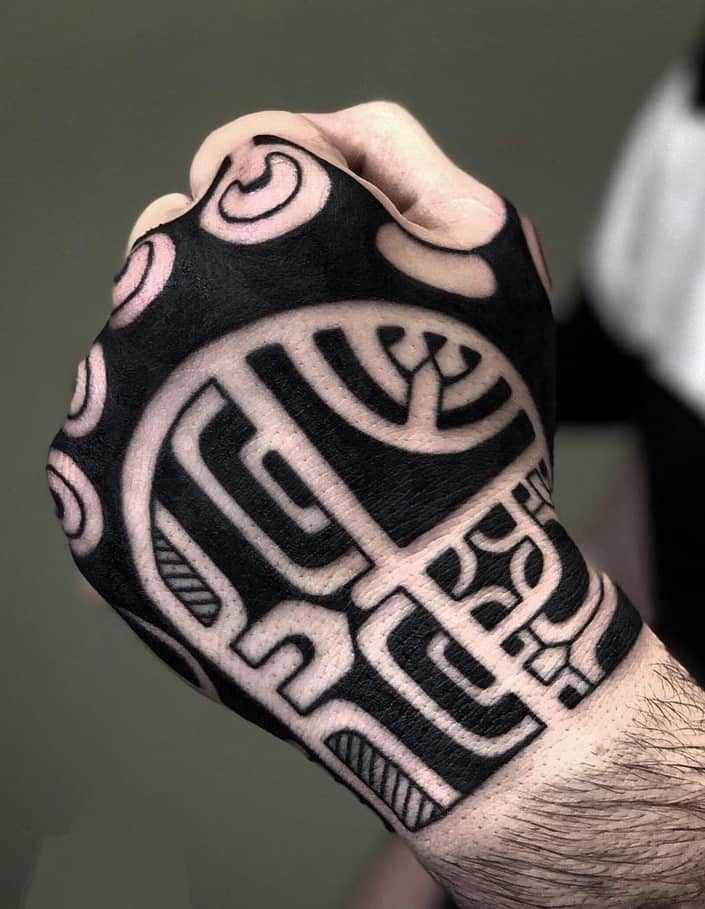

- Tribal Tattoos on The Upper Limb
An upper limb is an excellent place for your tribal tattoo.
You have ample enough space to showcase your tattoo artwork, but you also have the option to cover it up if need be.
It also is a great starting place if you'd like to expand down your forearm, chest, or back.
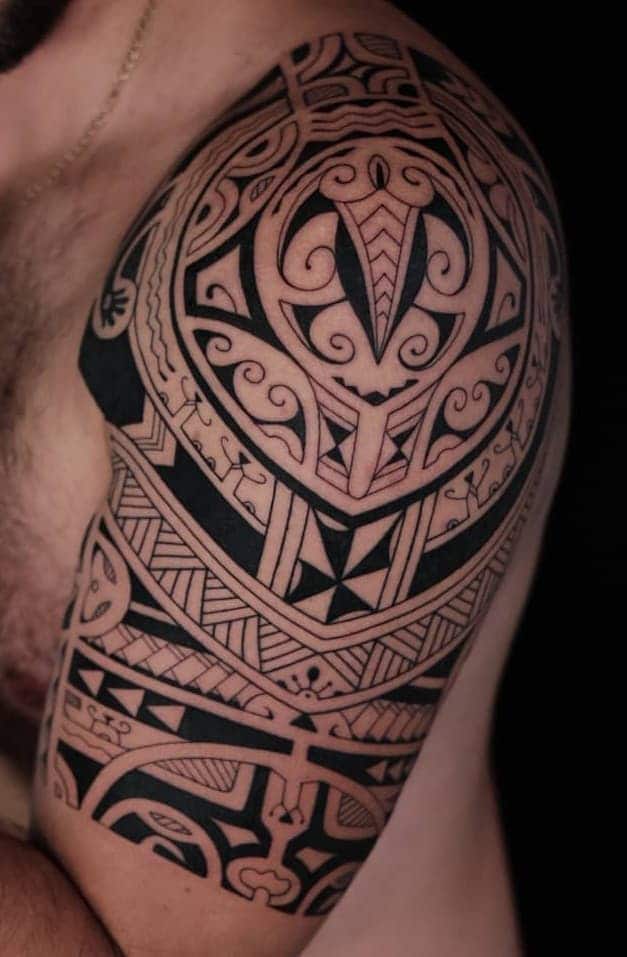
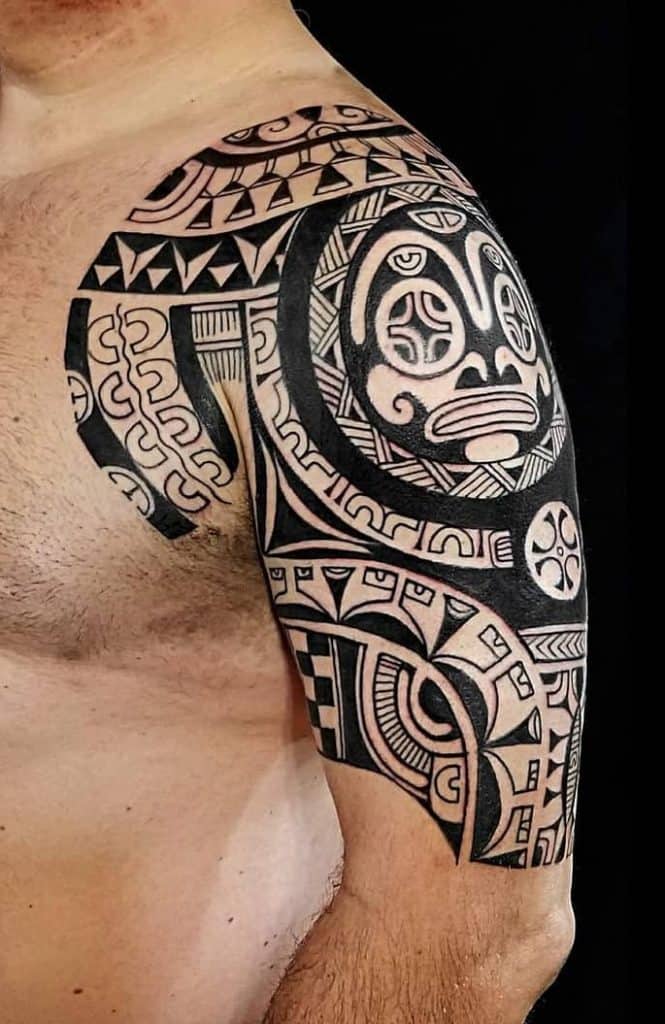
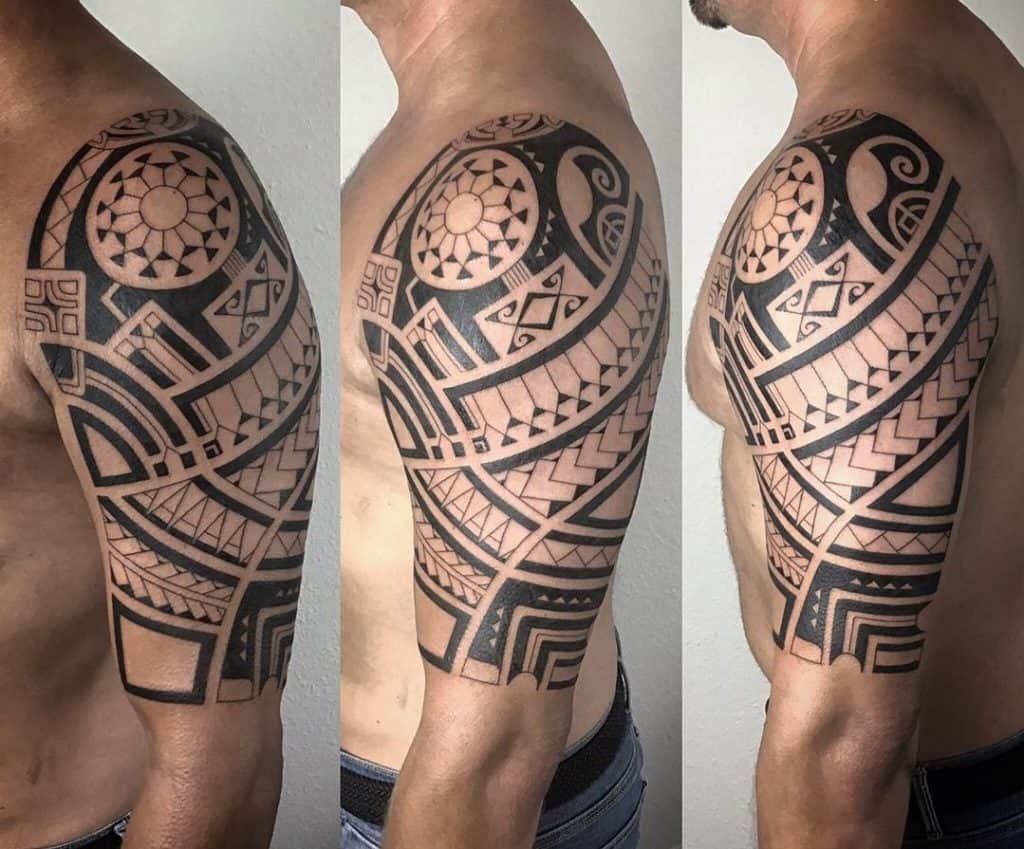
- Tribal Tattoos on Thigh
A tribal tattoo down your thigh might not be your entire leg, but that seems like a moot point.
It is still ample enough space to depict your tattoo artwork.
Nothing is stopping you from getting a bold tattoo piece or a very detailed one.
There is enough space to accommodate both if you choose!
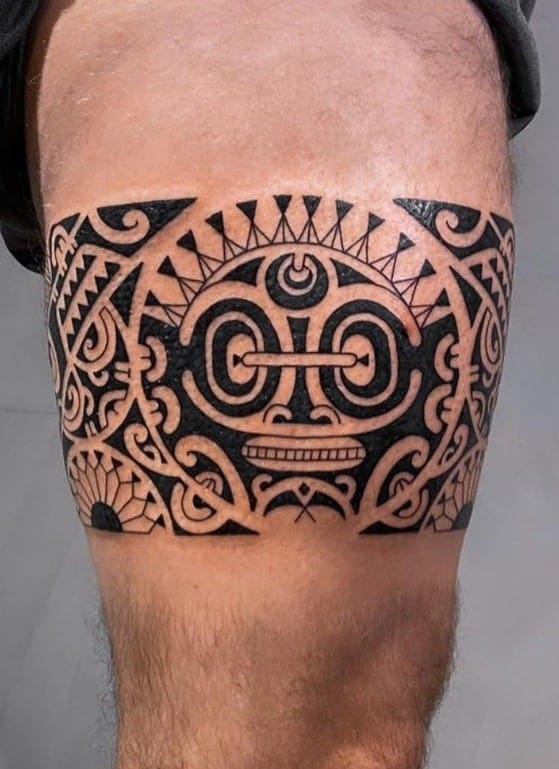

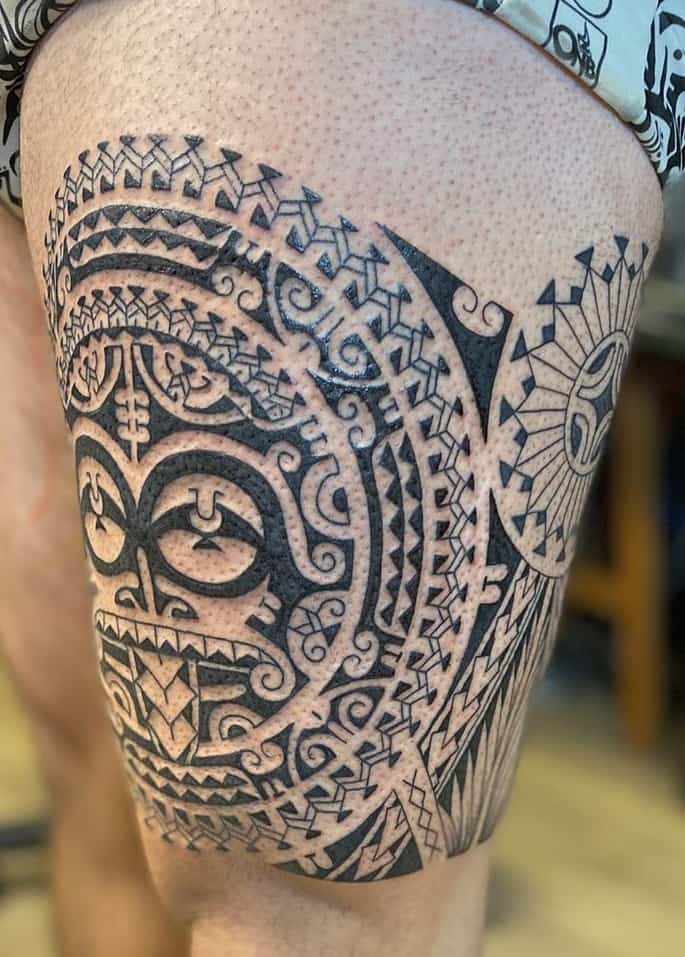
- Tribal Tattoos on Foot
Are you looking for a smaller-scale tribal tattoo without losing the bold abstract nature we are so accustomed to?
Why not choose your foot as your next placement for your tribal tattoo?
If you want it to be a bit bigger, you still have the option to have it trail up your ankle!


- Under-boob Tribal Tattoos
Tribal tattoos are not often described as sexy.
They are bold, abstract, and sometimes have tribal-looking faces.
They tend to come off as powerful and masculine, but that doesn't mean you shouldn't get one.
Try an under-boob placement of your tribal tattoo; that's a sure-fire way to make your tattoo look sexy.
- Tribal Ankle Tattoos
Despite tribal tattoos often being described as bold, some tattoo designs are more minimalistic.
A smaller piece of tattoo artwork can still have that tribal look but fit beautifully on your ankle.
The great thing about your ankle is the tattoo can trail up your leg or down your foot to add a little more to it!
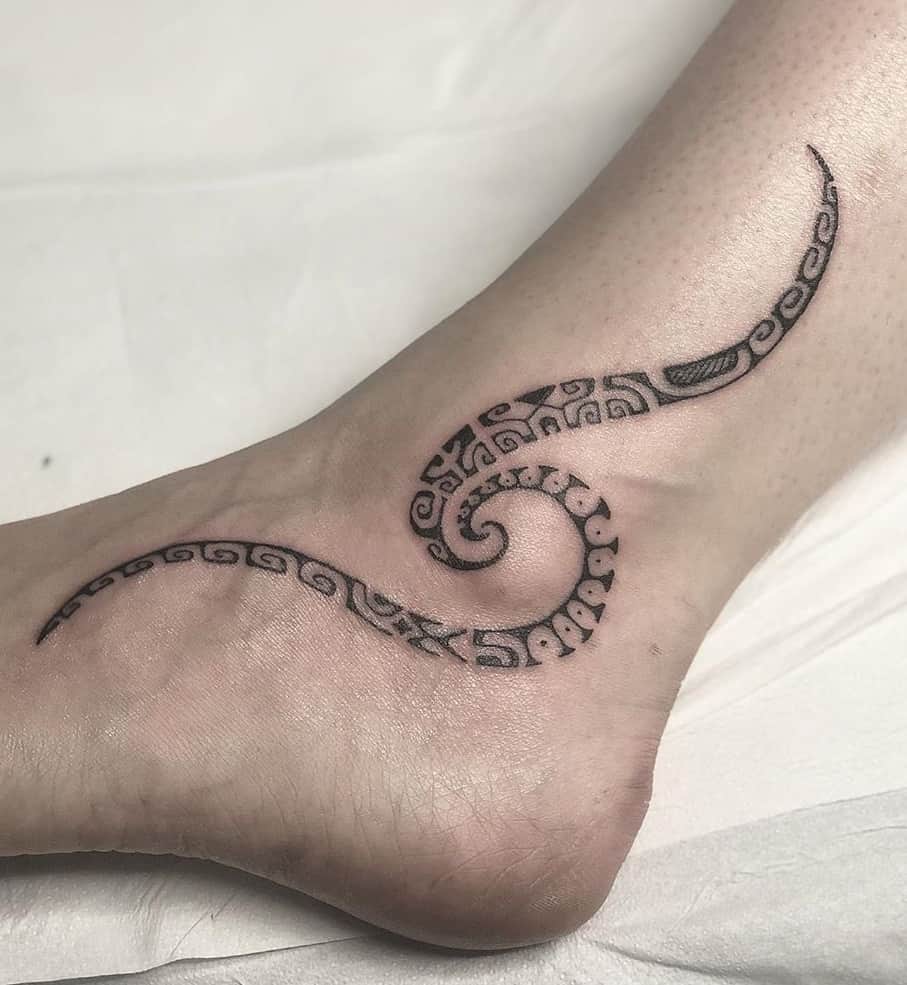

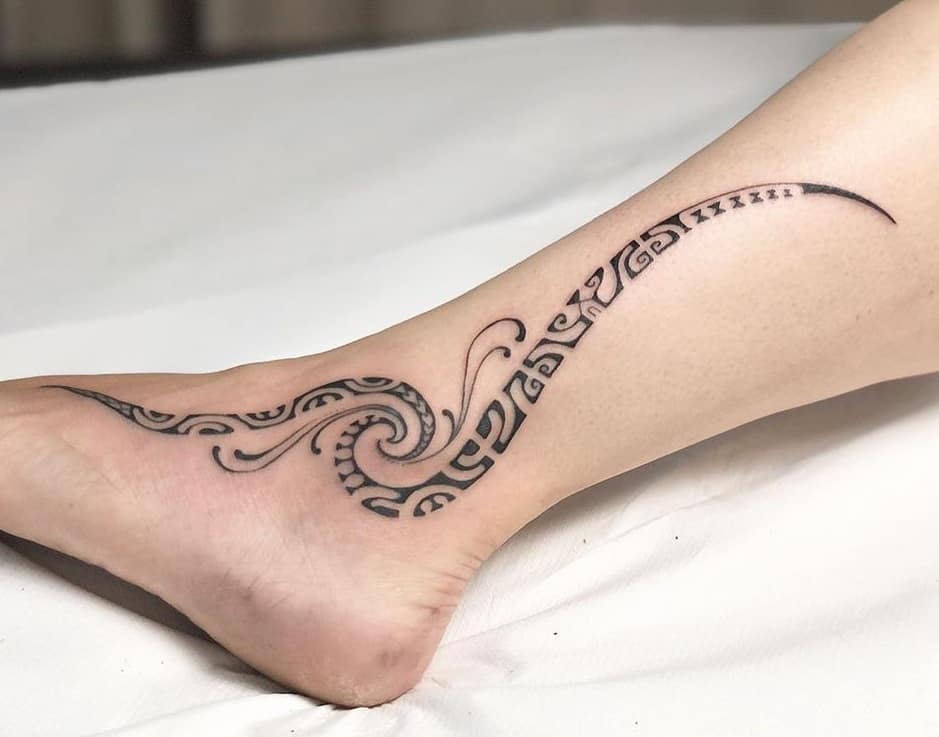
- Tribal Calf Tattoos
If you aren't ready for a large-scale tattoo that would fit your back or thigh, why not start with your calf?
It is still a sizeable space for your tribal tattoos.
You can match your tattoos and ink both calves, or you can stick with one.
The possibilities are endless!

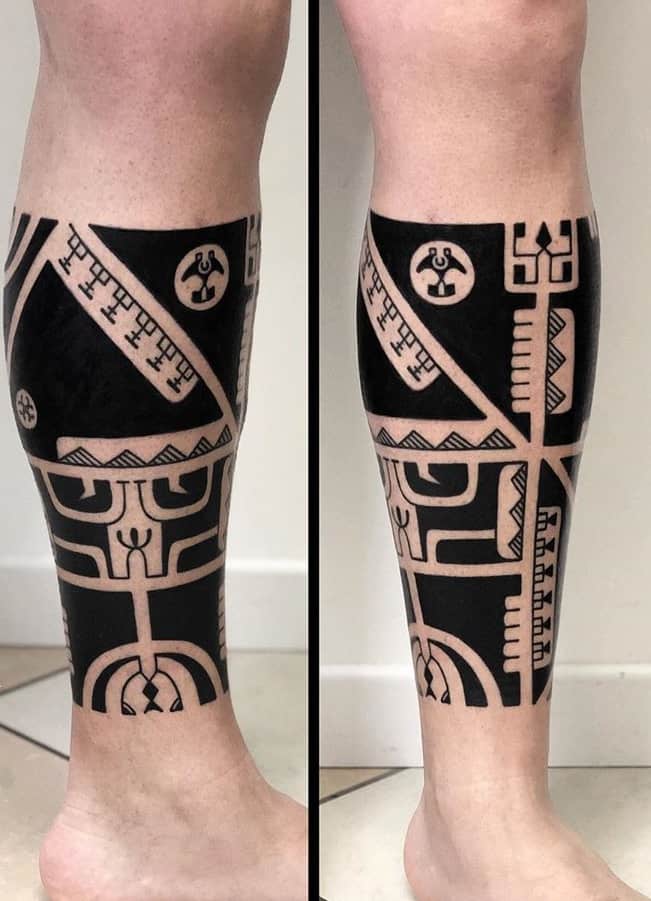
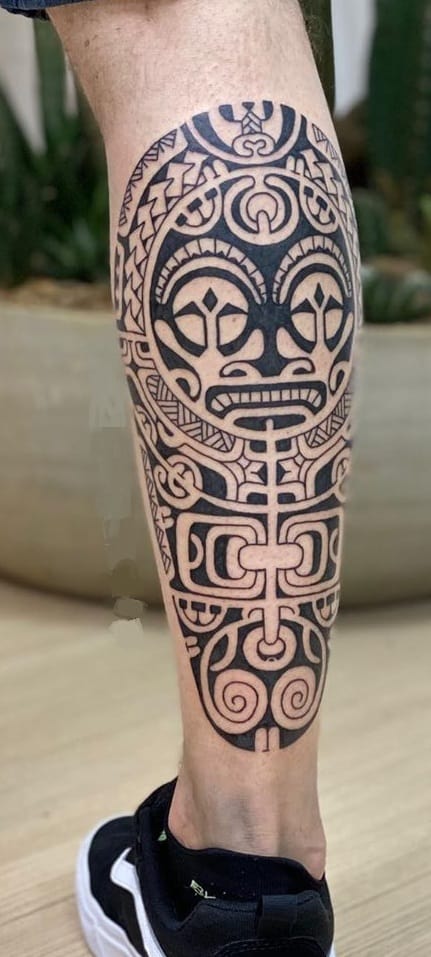
How Much Do Tribal Tattoos Cost?
If you are considering a tribal tattoo for yourself, it is likely that you are concerned about how much your chosen tattoo design will cost.
While the cost of tribal tattoos varies greatly depending on a slew of different factors, you can expect a high-quality tattoo design to be fairly expensive.
This is due to the fact that tribal tattoos are usually very large, filling up an entire limb, leg, or shoulder.
Tribal tattoos are also very detailed.
Each of these factors means that a qualified tattoo artist will need to keep you in the chair for longer than many other tattoo styles.
With more time spent in the chair, you can rest assured you'll be spending more.
While the exact cost of your tribal tattoo will depend on the rates of your chosen artist, you should expect your tattoo design to cost somewhere between $300 to $1500 dollars or more for a quality piece of tattoo art.
How to Choose the Best Tribal Tattoo Design For You
In order to choose the best tribal tattoo design for you, you need to ask yourself a series of questions.
First, you should have an idea of the meaning (if any) that you wish to portray through your tattoo.
Secondly, you should work collaboratively with your chosen tattoo artist to decide on the tribal tattoo style that works best for you.
Finally, you'll need to decide on the right placement.
Answering each of these questions, you should have a good idea of the best tribal tattoo design for you.
Main Themes in Tribal Tattoos
Tribal tattoos are not just perfectly placed lines woven together; they have different meanings behind them.
There is a reason why these abstract tattoo designs come together into the intricate design we all know today.
We will explore the different origins and backgrounds behind these bold tattoos, and hopefully, you will get a better understanding of their existence before you go out and get one of your own!
Zoomoprhic Tribal Tattoos
Most people don't know what the word zoomorphic means.
It is when humans manipulate patterns to depict the images of animals.
Zoomorphic tribal tattoos can also involve combining the traits of two different animals into one tattoo design.
Over time, different cultures have developed their own forms of zoomorphic tribal creations that were accompanied by unique meanings.
- Tribal Eagle Tattoos
Eagles represent a variety of different meanings.
Eagle tattoos symbolize freedom, power, dominance, and clarity.
The eagle's impressive ability to soar through the sky is the reason behind their connection to sky gods.
They are known to be the enemy of evil, and there is no wonder why Native American tribes honored them so highly.

Eagles were worshiped in many other cultures as well.
In Greece, the eagle represents masculinity, strength, and virility.
That might be the reason why you see a majority of men tattooing these majestic animals on their bodies.
A combination of a tribal-style tattoo and the cunning design of an eagle creates a magnificent tattoo.
- Tribal Owl Tattoos
A tribal owl tattoo casts a wide net when it comes to their symbolism.
Native American tribes have clashed in their interpretations.
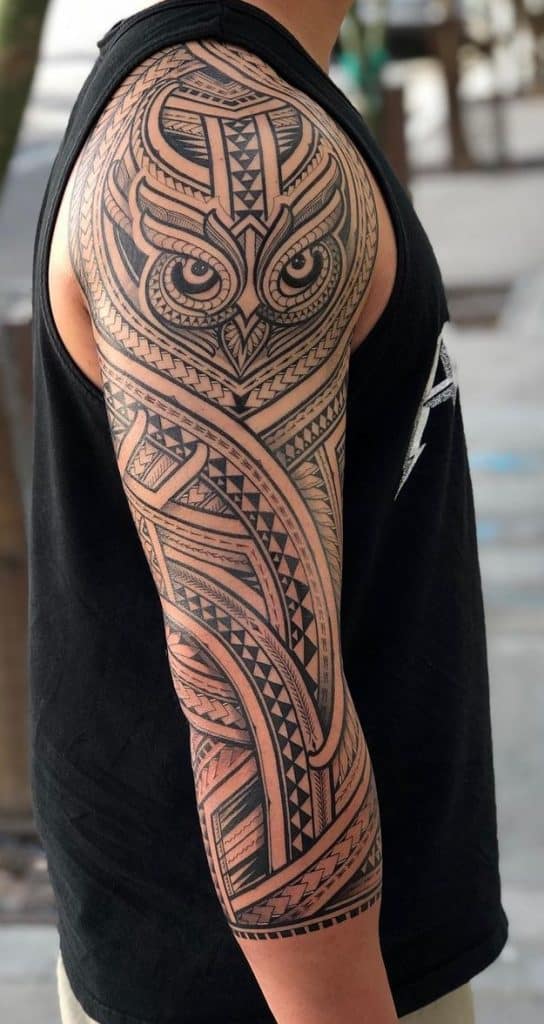
Some native American tribes view the owl as an omen of protection that oversaw the departed spirits.
Other tribes saw them negatively; they believed that owls symbolized evil and the god of departure from life.
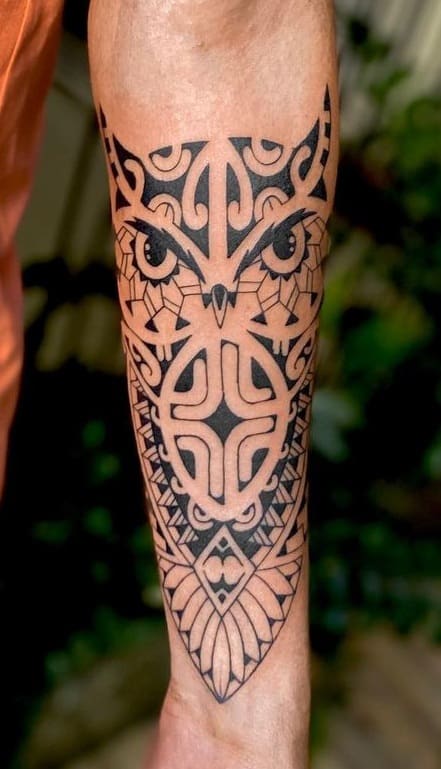
An owl's nocturnal nature contributed to the belief of being linked to the afterlife.
Today, owl tattoos are mostly known for their wisdom.
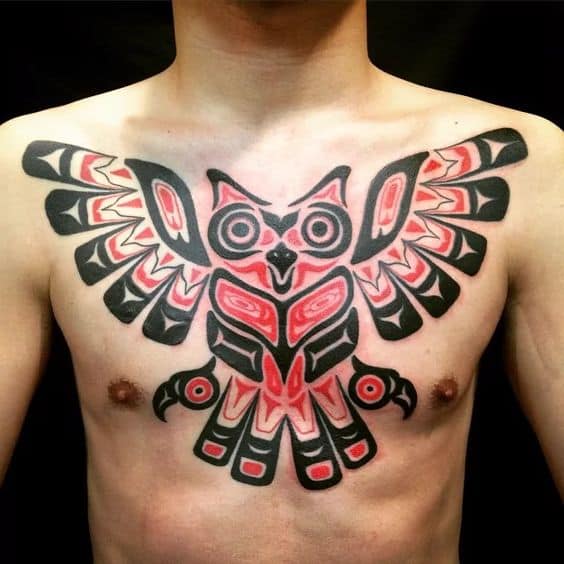
It would be a bright idea to fully understand the meaning you are trying to embody before choosing a tribal owl tattoo.
- Tribal Elephant Tattoos
Elephant tattoos are indeed a magnificent statement piece.
Visually they are incredible; coupled with their symbolism, they make them a perfect tattoo addition to your body.
Elephants are one of the oldest animals around, so it is no surprise that they are revered for their wisdom.

Elephants are impressively intelligent creatures that have shown enormous emotional awareness.
They exude unmatched strength, good luck, and loyalty.
Tribal tattoos have their unique cultural meanings, but luckily, elephants are universally known for their beautiful traits.
If you are looking to encompass these positive qualities, you might want to consider having one of these gentle giants tattooed.
- Tribal Fox Tattoos
A fox wears many hats throughout history and is traced back to many lands, cultures, legends, and folklore.
In Japanese culture, they are known as kitsune, whereas they are seen as a conniving trickster to Native Americans.
Foxes are involved in many storytelling tales passed down to generations.

These creatures can come off mischievous but they are also known for how clever they are.
Others refer luck and good fortune to this canine group.
In Native American culture, the fox was an intelligent and determined animal.
It would scheme to get into huts and food storage.
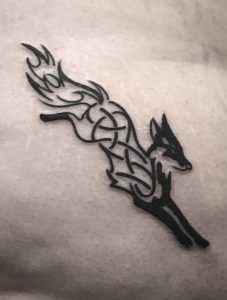
Tales of the fox was always how they were outwitting the humans.
Despite being a trickster their wisdom is not something to be ignored, so why not embody some of it by getting a tribal fox tattoo!
- Tribal Hammerhead Shark Tattoos
There is no mistaken a hammerhead shark.
Their distinctive-shaped head makes them stand out among the rest of the sharks.
Their wild nature is one to embody if you choose to add this sea animal to your body.
The hammerhead shark is seen as a sign of brute masculinity and can be designed in a threatening manner.
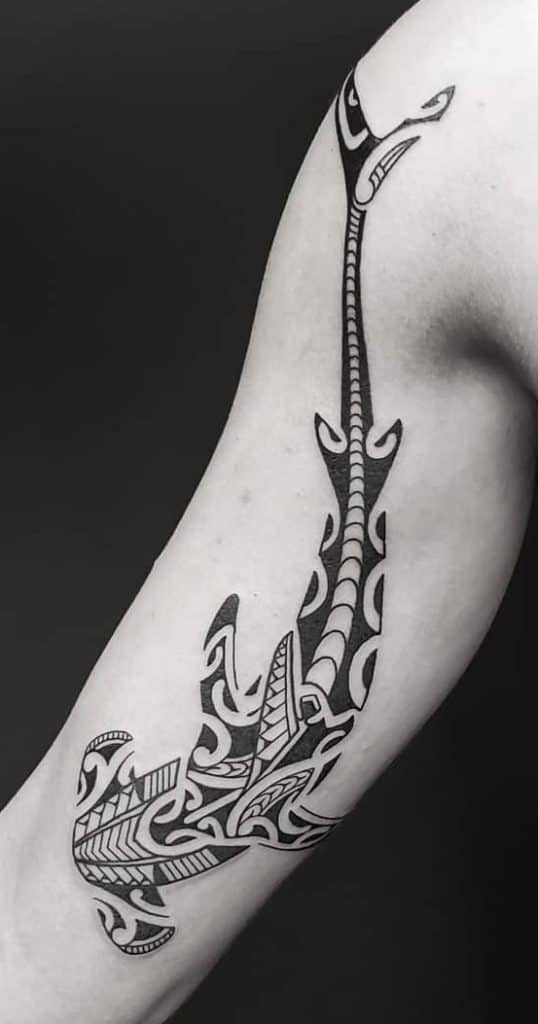
If you seek to get this vicious shark as your next tattoo but are hesitant about the graphic, skin-ripping designs, a tribal-style tattoo can be an excellent option instead.
- Tribal Lion Tattoos
The lion did not inherit the title "king of the jungle" for no reason.
These wild felines are an unstoppable power that can explain their popularity in tattoos.
The abstract lines of a tribal lion tattoo only enhance the robust features of a lion.
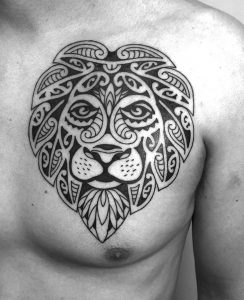
A lion tattoo is a grand sight to see in and of it but if you are looking for a sleeker look, consider a tribal style design of this mighty mammal.
Lions have a close connection to astrology for the Leos born in July and August.
There is no stopping the wild feeling you'll get when you tattoo a tribal lion!
- Tribal Monkey Tattoos
Monkeys are closely related to humans, and they even act like us too!
Their playful and joyful nature is hard not to love.
They are adored by many cultures and found in several mythology tales and legends.
Monkeys are religious figures in some cultures as well.
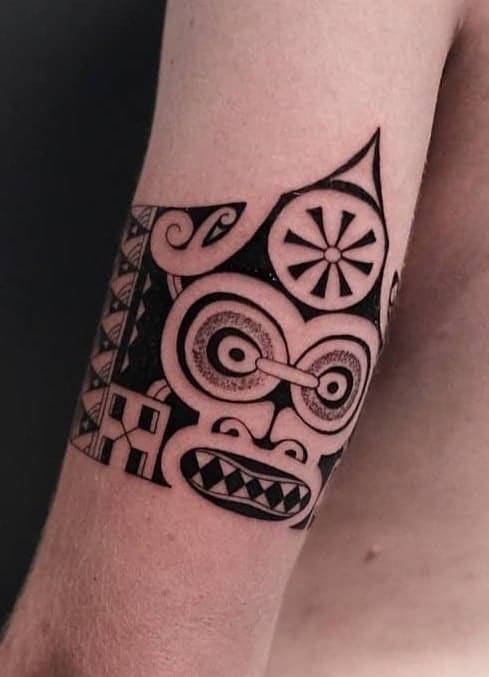
It was believed that when Buddha ascended into heaven, he invited all the animals to join him, but only twelve did.
He rewarded them by making them our beloved zodiac signs we know today, and the monkey was one of them.
A tribal monkey tattoo can connect their playful nature with their religious affiliation.
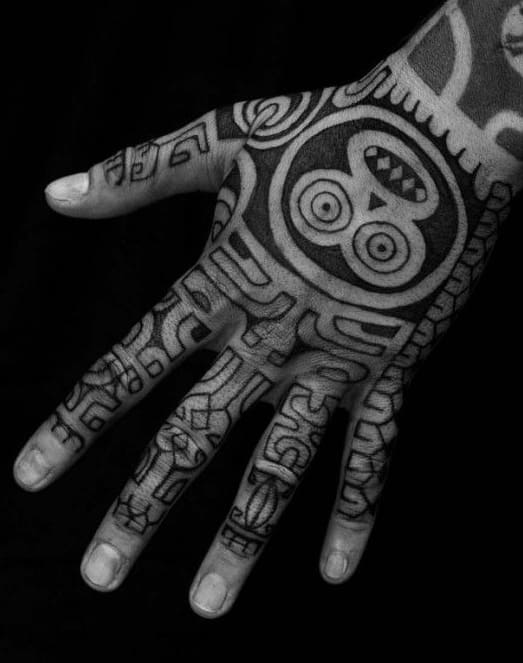
Tribal monkeys can be specifically traced back to Native Americans, Polynesians, and Haida.
All of these cultures had a massive influence over these innocent and cheerful creatures.
There is plenty of research to be done before you choose a tribal monkey tattoo!
- Tribal Scorpion Tattoos
A tribal scorpion tattoo has been viewed in many different ways.
They are connected to male sexuality and their arousal.
Despite this apparent male connection, women shouldn't be deterred from getting their own scorpion tattoo.
On a female, a tribal scorpion tattoo represents strength.
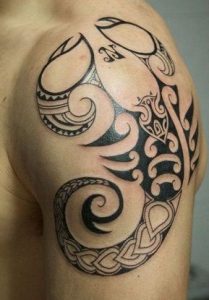
It is a way to show that no matter what obstacle or person gets in their way, they can hold their own and be victorious.
A woman with a scorpion tattoo is not intimidated by status, size, or ability.
Tribal scorpion tattoos can represent protection which is attributed to the fact that they possess a deadly stinger at the end of their tail.
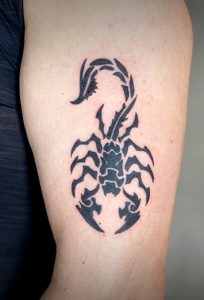
They often strike with a lethal blow when feeling threatened.
If you have some dispute in you and have the ability to stand your ground, then a tribal scorpion tattoo might be fitting.
- Tribal Snake Tattoos
There are many ways to describe a snake.
They can be stealthy and sneak up on you without even knowing it.
They are wise and strategic as they wait for the perfect opportunity to strike their prey.
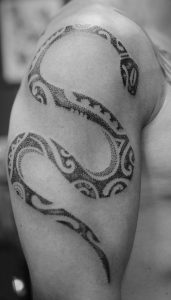
Snake tattoos symbolize patience, wisdom, and fertility.
Snakes often shed their skins which is why they are symbols for transformation, rebirth.
If you have gone through a bad phase and survived, a tribal snake tattoo might be a good fit for you.
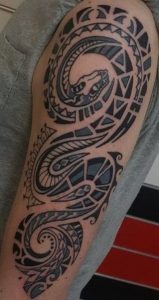
A snake shedding its skin can also be seen as a sign of immortality.
Whether you are looking to embody wisdom, stealth, or rebirth, a tribal snake tattoo might be the perfect fit!
- Tribal Stingray Tattoos
Tribal people of the Pacific Islands often wear tribal-style stingray tattoos.
Usually, this type of tattoo represents their rank within the tribe.
Stingrays are symbolic of protection, agility, and speed.
Stingrays cannot only glide through the water at impressive speeds but also adapt quickly to their surroundings.

They can navigate through their unpredictable environment quite well.
Tattooing a stingray is an excellent way to represent that trait.
If you are looking for a way to manifest the ability to be fluid with obstacles thrown your way, a stingray might be an excellent choice.
Choosing a tribal tattoo design will only enhance the stingray's sleek-looking features!
- Tribal Tiger Tattoos
The brother of the lion might not be deemed the "king of the jungle," but it is definitely in the family of wild felines.
Tigers illuminate raw power and harness it as an independent predator.
They are free to roam and wander as much it pleases them.

Tigers are not only known for their wild nature but they are praised for their beauty and grace.
Tigers hold a lot of honor in mythology and folklore in Asian cultures.
Tigers emulate courage in Chinese culture.
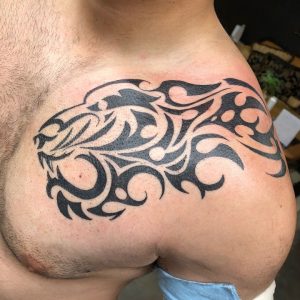
Everybody can use a little more courage in their lives, so why not embody a tiger tattoo as your next tribal tattoo?
- Tribal Sea Turtle Tattoos
Turtles are incredibly versatile, with having the ability to survive the elements on land and in the water.
Luckily they have a hard shell that protects them and makes it difficult for prey to penetrate their hard exterior.

The turtle tattoo popularity originated from the Polynesian islands, where they are well known for their religious, tribal tattoos.
It is believed that turtles have an intimate connection with the earth.

Within Native American culture, they thought an enormous turtle carried the weight of the earth on top of its hard shell.

Embodying a hard exterior is easy to do when you have a tribal turtle tattoo.
- Tribal Wolf Tattoos
A wolf's untamed nature is alluring, especially for men, to have inked on their bodies.
A wolf is known for its aggressive nature and unwillingness to back down.
A wolf tattoo designed with the well-known tribal flare, there is no doubt you will be having people stop and stare at your ink.
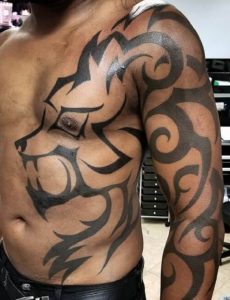
Wolves also are an excellent example of loyalty; they travel in packs and protect their own.
The term "lone wolf" comes to mind when this canine is mentioned, and if your personality is independent and strong, a tribal wolf tattoo can exude that without saying a word.
A wolf's symbolism is versatile, so the possibilities are endless.
Tribal Zodiac Tattoos
Zodiac signs are well known across multiple cultures.
They are based on the date of your birthday and are supposed to align with your personality traits.
There is no surprise that someone would like to get their sign tattooed on their body to showcase their zodiac demeanor. A tribal-style zodiac tattoo is a unique way to achieve this.
- Aries Tribal Tattoos
Aries was the first zodiac sign ever created, and a ram represents it.
This zodiac sign is known for its leadership.
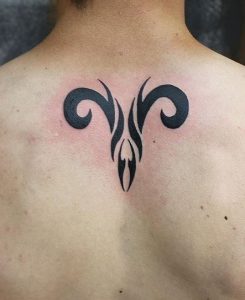
An Aries is bold, courageous, spontaneous, and is never afraid to take charge.
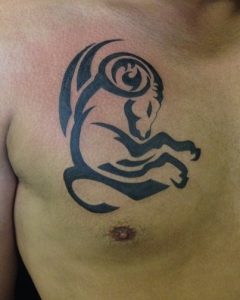
If you are an Aries and need a little more encouragement to possess these strong qualities, an Aries tribal tattoo is an excellent way to embody that.
- Cancer Tribal Tattoos
Cancer is typically represented by a sideways 69 and a crustacean.
A crab represents the zodiac sign, Cancer.
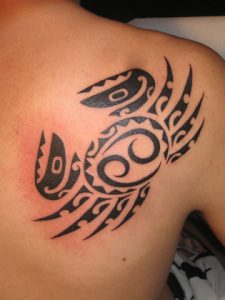
They are often highly emotional beings and can be moody, or a better term would be "crabby."
They are passionate lovers but be careful; they tend to switch their moods at the drop of a hat.
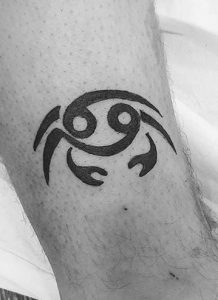
A tribal cancer tattoo can give that bold look to your emotional demeanor.
- Leo Tribal Tattoos
The bold and wild feline represents a Leo.
A lion tattoo emulates strength and power.
The Leo zodiac sign is part of the fire signs, and it's no surprise they are the kings and queens of the jungle.
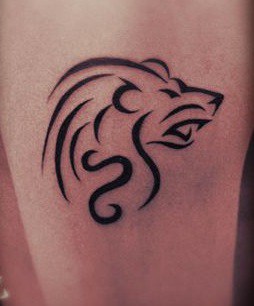
Their royal status shines through their need to be the center of attention.
A Leo tribal tattoo is an excellent way to add a sleek design took to a vivacious animal.
- Pisces Tribal Tattoos
The beauty of zodiac signs is that they are a way to tell people how you are without saying anything.
The Pisces zodiac sign represents compassion and empathy.

Their symbol of two fish swimming in opposite directions represents a Pisces' innate attention to the differences of reality and fantasy.
If you are part of this caring water sign, an abstract tribal style can be a great addition to your tattoo art.
Tribal Tattoo Ideas
Throughout time, ancient peoples have had to lock horns to keep their customs sacred.
Either because people are telling them they're lippy, or because tourists who don't understand are getting the tattoo designs flippantly.
Tribal tattoos are a beautiful custom when treasured with the reverence they deserve.
Be sure to do your research and ask permission before getting a tribal tattoo.
Also, consider getting a tattoo design from your own bloodline.
If you look back far enough, you'll find something!
Check out our tribal tattoo gallery to admire some beautiful tribal tattoos.
- Tribal Tattoo Sleeve
A sleeve with a sprawling tribal tattoo design is nothing short of a fantastic sight.

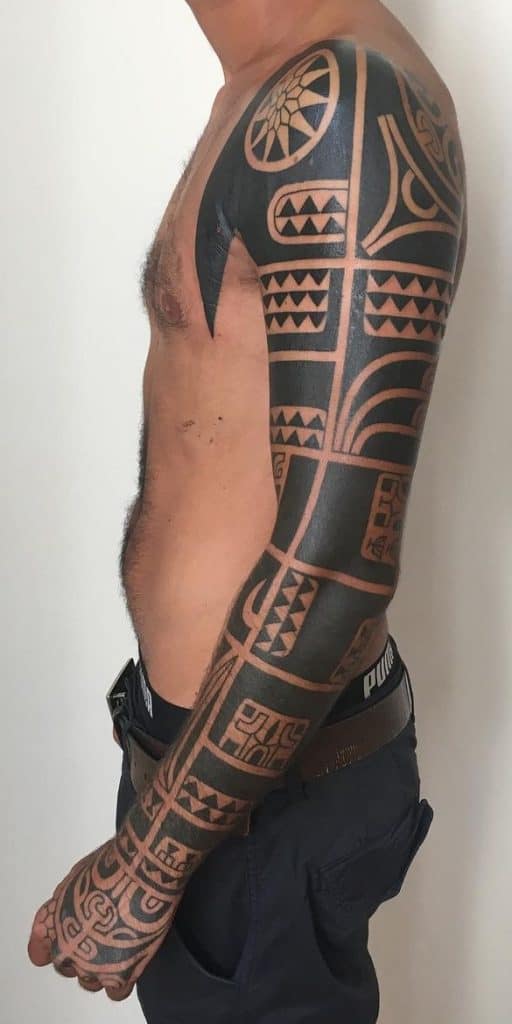
These abstract tattoo designs have no limit on creativity significantly when trailing up and down your limb.


Your possibilities are endless when you choose to tattoo on such a large space, and you have no problem making a statement!

- Tribal Half Sleeve Tattoos
If you are not ready for a whole sleeve for your tribal tattoo, a half sleeve is a great way to start.


The beauty of tribal tattoos is that if you are eventually ready to expand your ink, they can easily continue with the design.
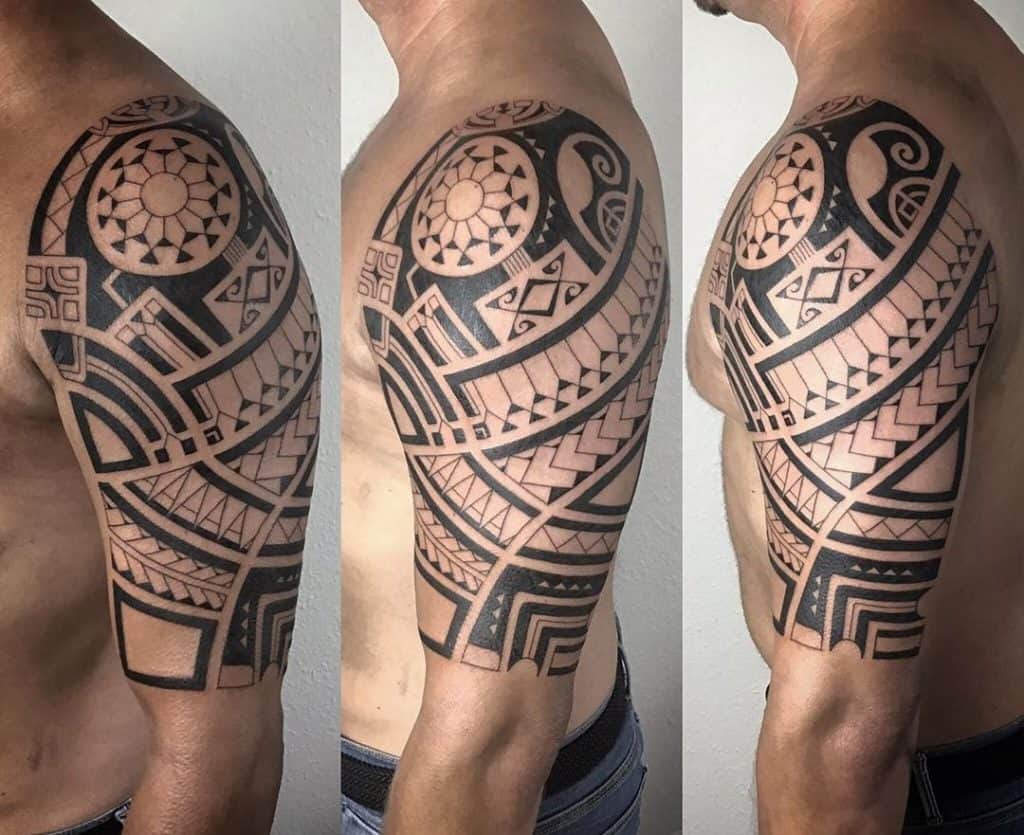

There is no reason to have a stop and starting point when getting a tribal tattoo!
- Tribal Tattoos for Women
Tribal tattoos have a reputation for representing masculinity.
Famous male actors showcase their tribal tattoos like Dwayne "The Rock" Johnson or Jason Momoa, but there is no rule that states only males can get them.

These strikingly sleek tattoo designs can be manipulated to a more feminine aesthetic, especially if coupled with a nurturing animal.
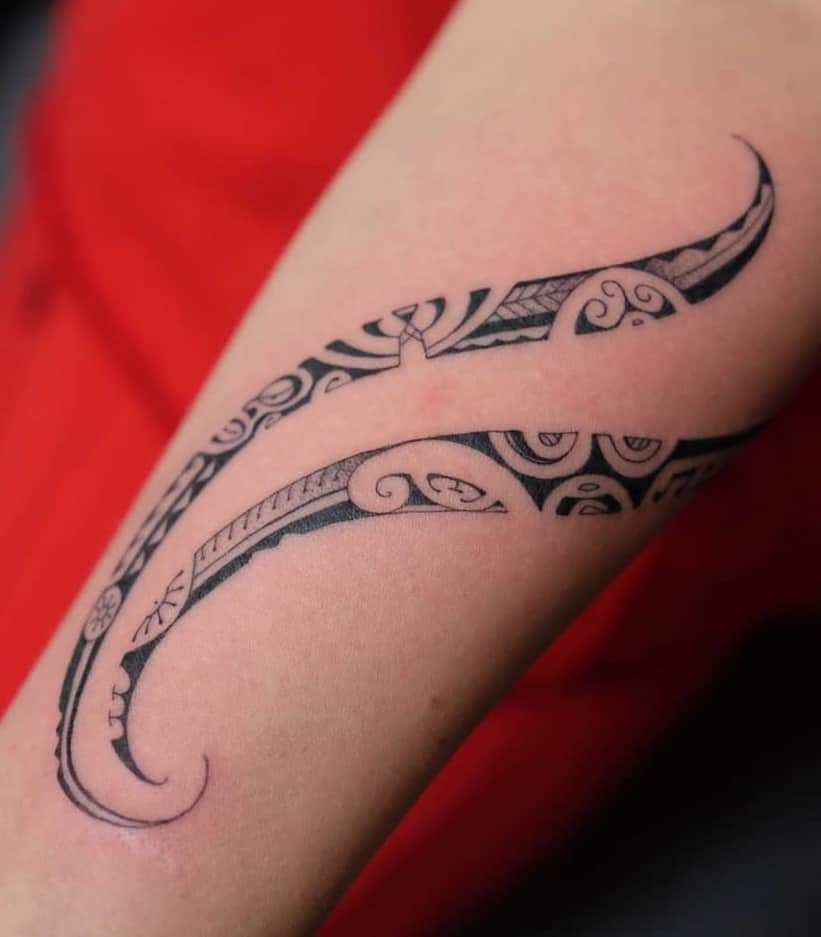
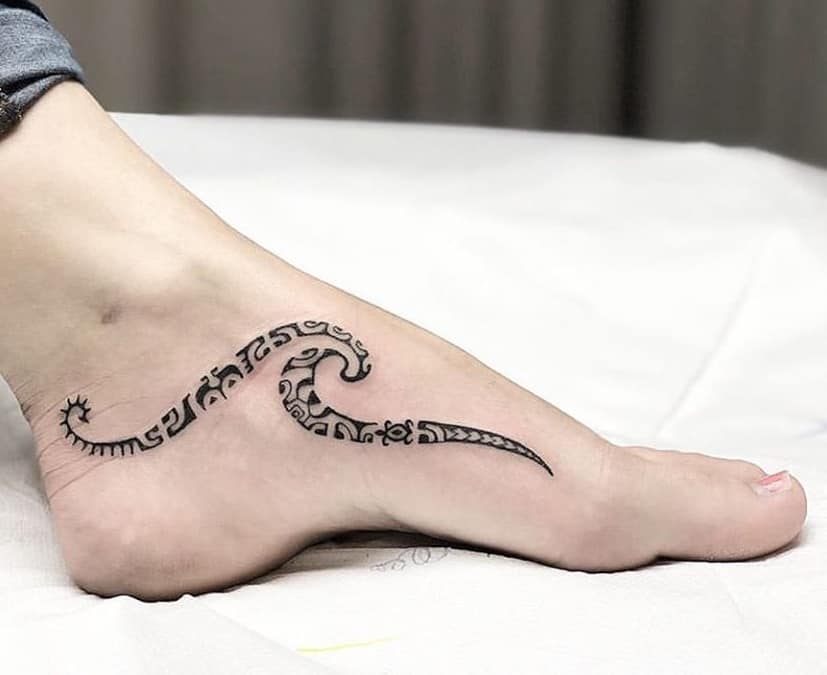
- Small Tribal Tattoos
Tribal tattoos make a bold statement, especially when inked on a large part of one's body.
Despite this, tribal tattoos don't always need to take up such a significant portion of your body to have the same effect.
Try a tribal tattoo design that can fit on a smaller scale like your ankle, which can still pack the same bold punch.
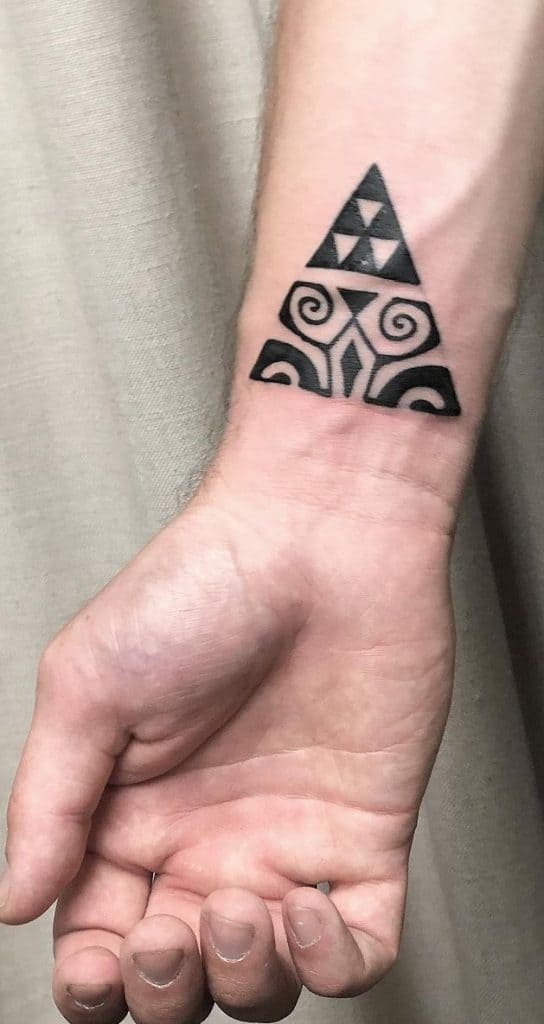


- Bracelet Tribal Tattoos
A popular placement for a tribal tattoo would be around your wrist.
Also known as a bracelet tribal tattoo.
Getting a bracelet tattoo can symbolize the never-ending cycle of life.
The bracelet tattoo is a continuation of the intricate tribal design and is incredibly pleasing to the eye.




Conclusion
Tribal tattoos are linked to a long line of history.
They originate from different cultures throughout the world and represent different meanings, depending on their origin.
Today, many people choose a tribal tattoo for their appealing abstract aesthetic style over the actual meaning.
Whether you are looking to honor your heritage or embody the qualities of a lion, a tribal tattoo is never a wrong choice!
Related posts:
- Celtic Tattoos
- Choctaw Tattoos
- Haida Tattoos
- Viking Tattoos
- Quetzalcoatl Tattoos
- Old School Tattoos
- Geometric Tattoos
- Watercolor Tattoos
- Aztec Tattoos
- Flower Tattoo Ideas
- Japanese Tattoos
- Best Tattoo Ideas
3d Tribal Shoulder Tattoo Designs
Source: https://tattmag.com/tribal-tattoo/
Posted by: richardsniumor1935.blogspot.com

0 Response to "3d Tribal Shoulder Tattoo Designs"
Post a Comment